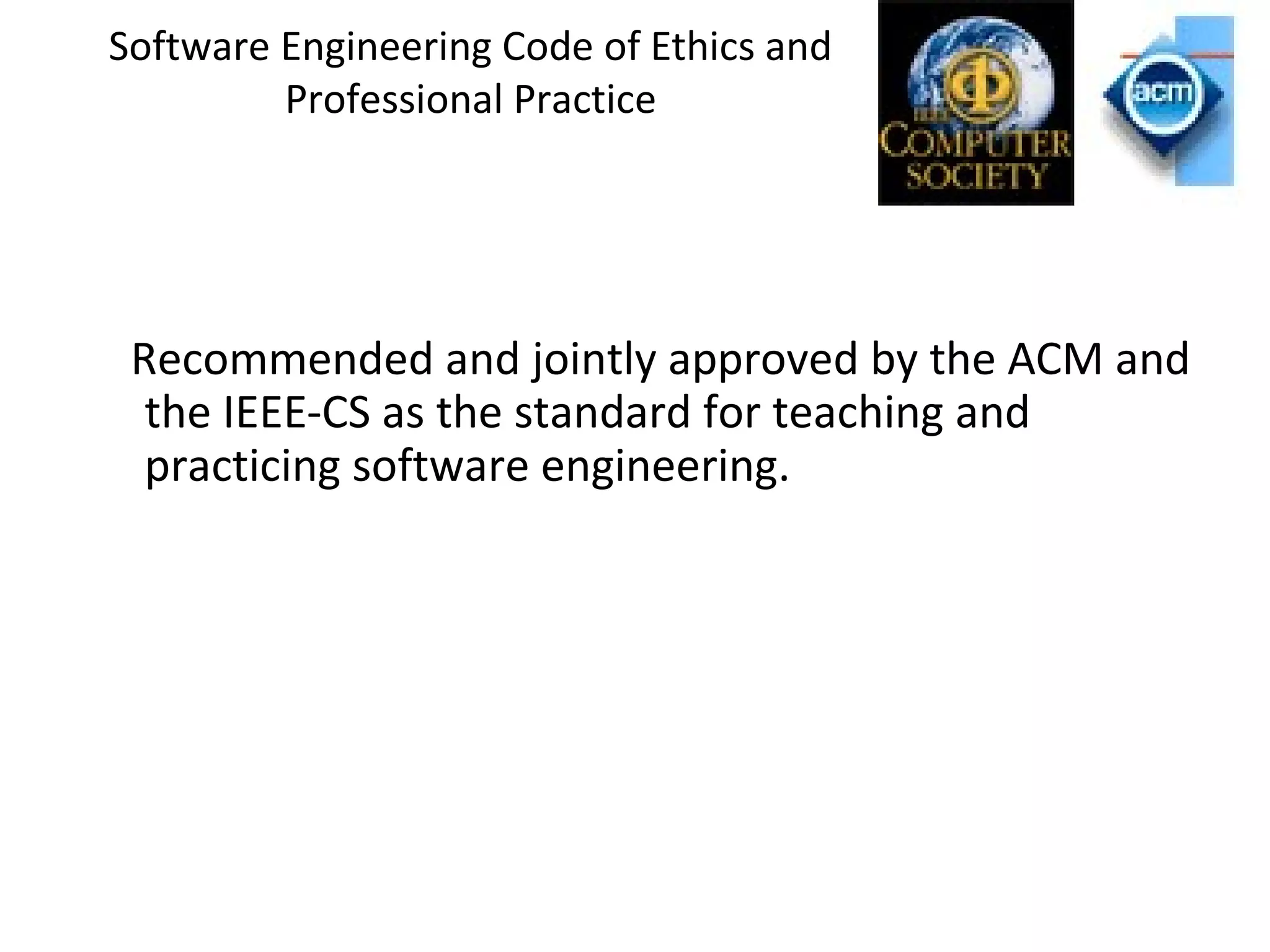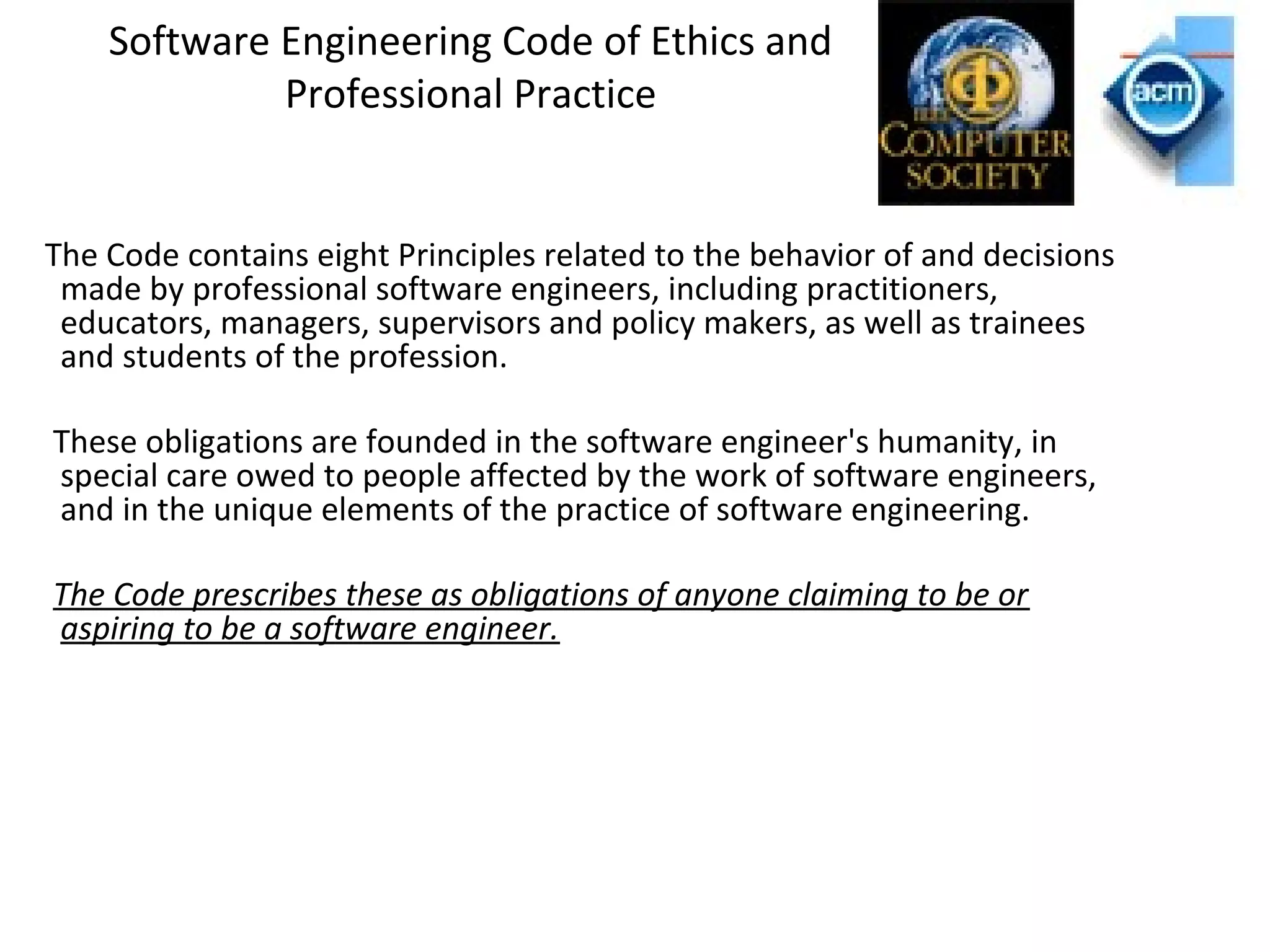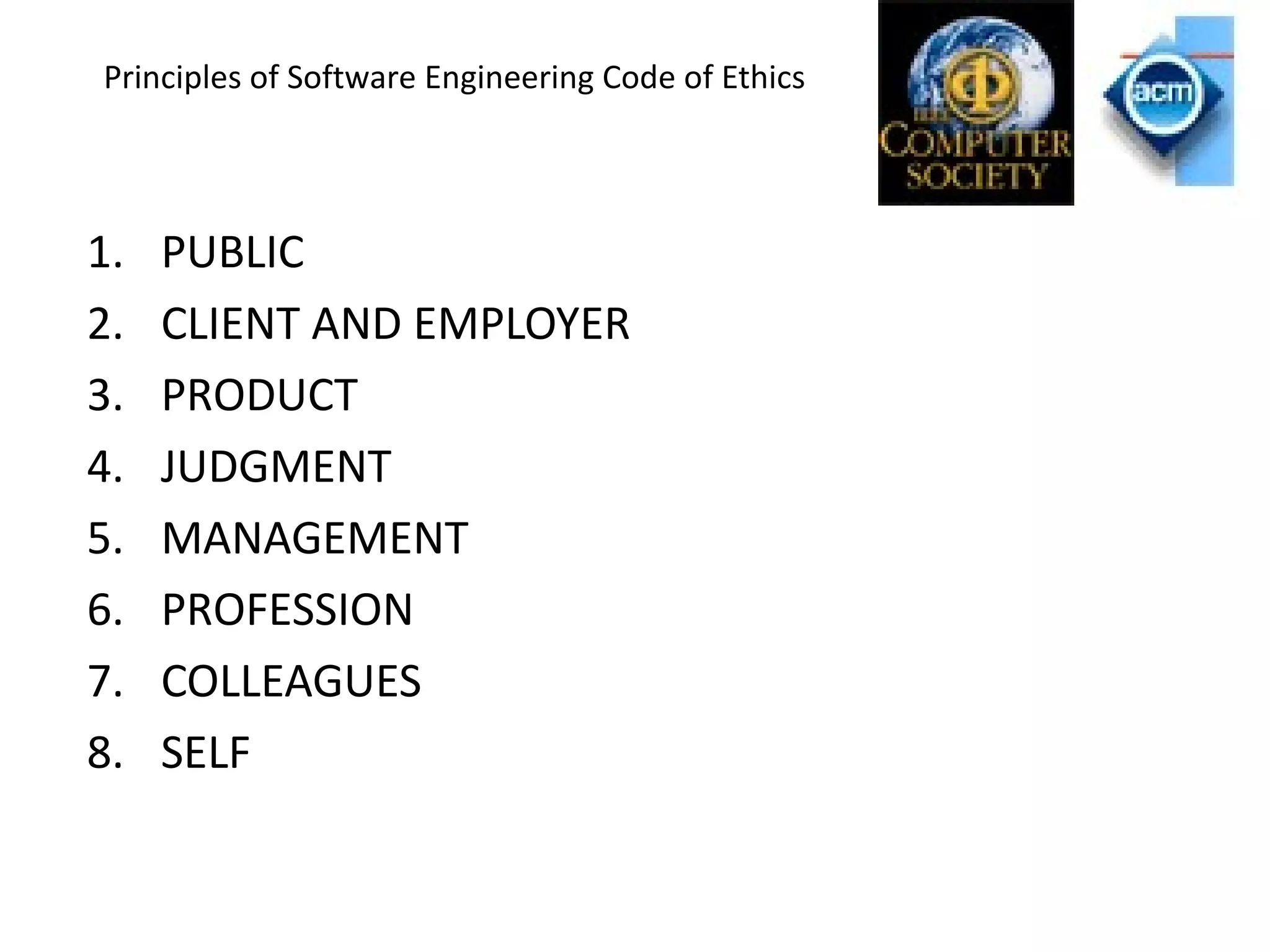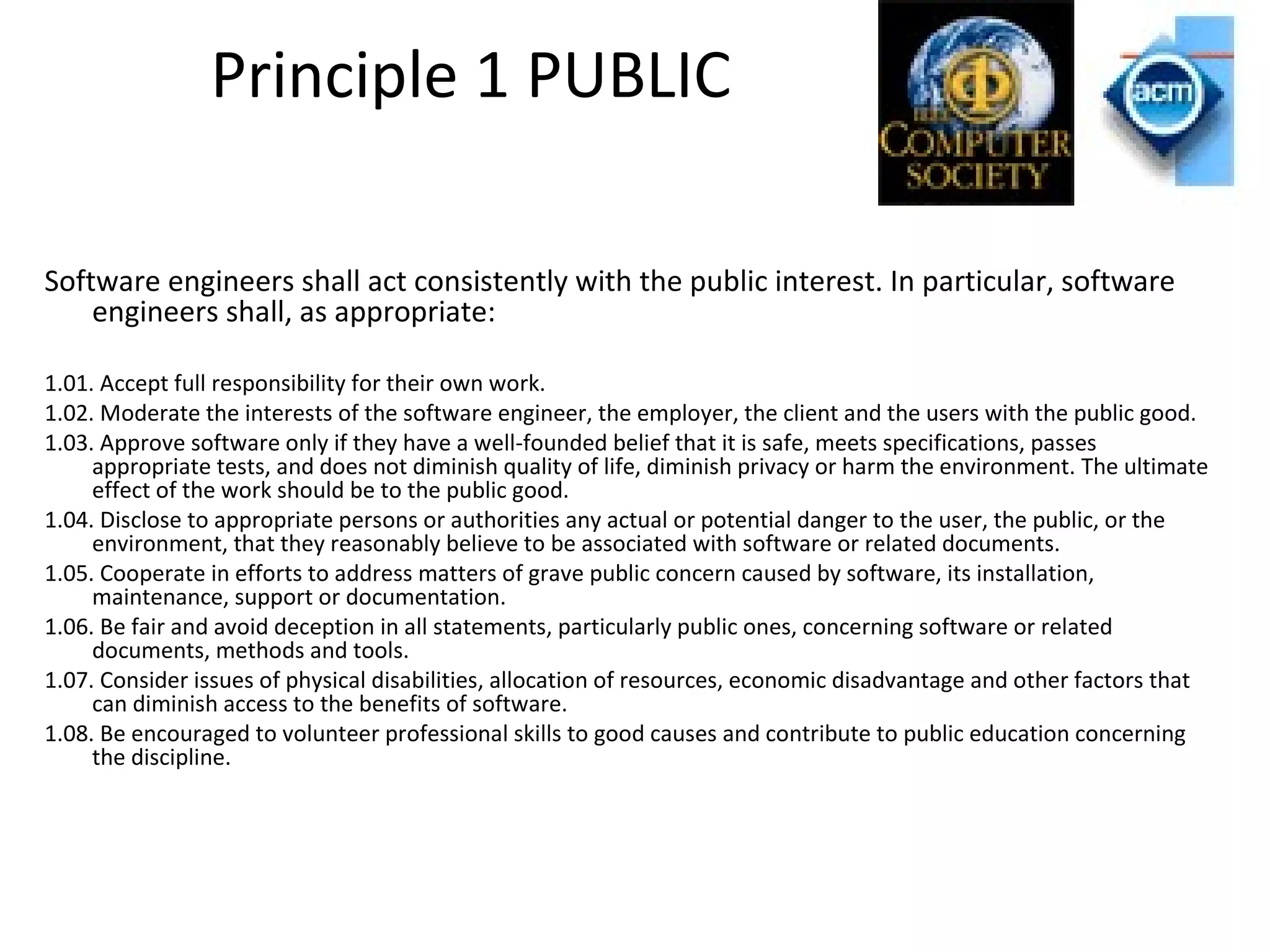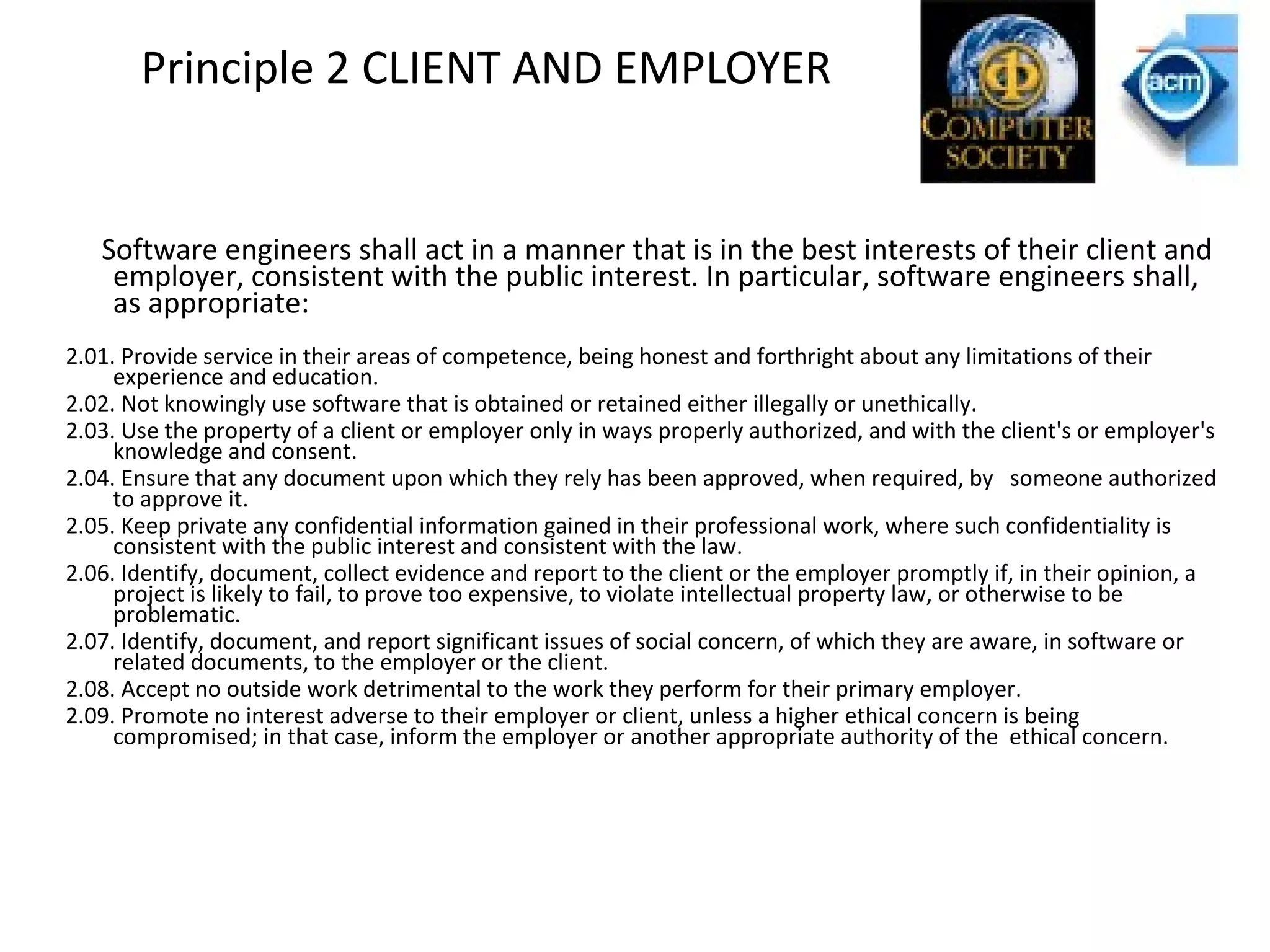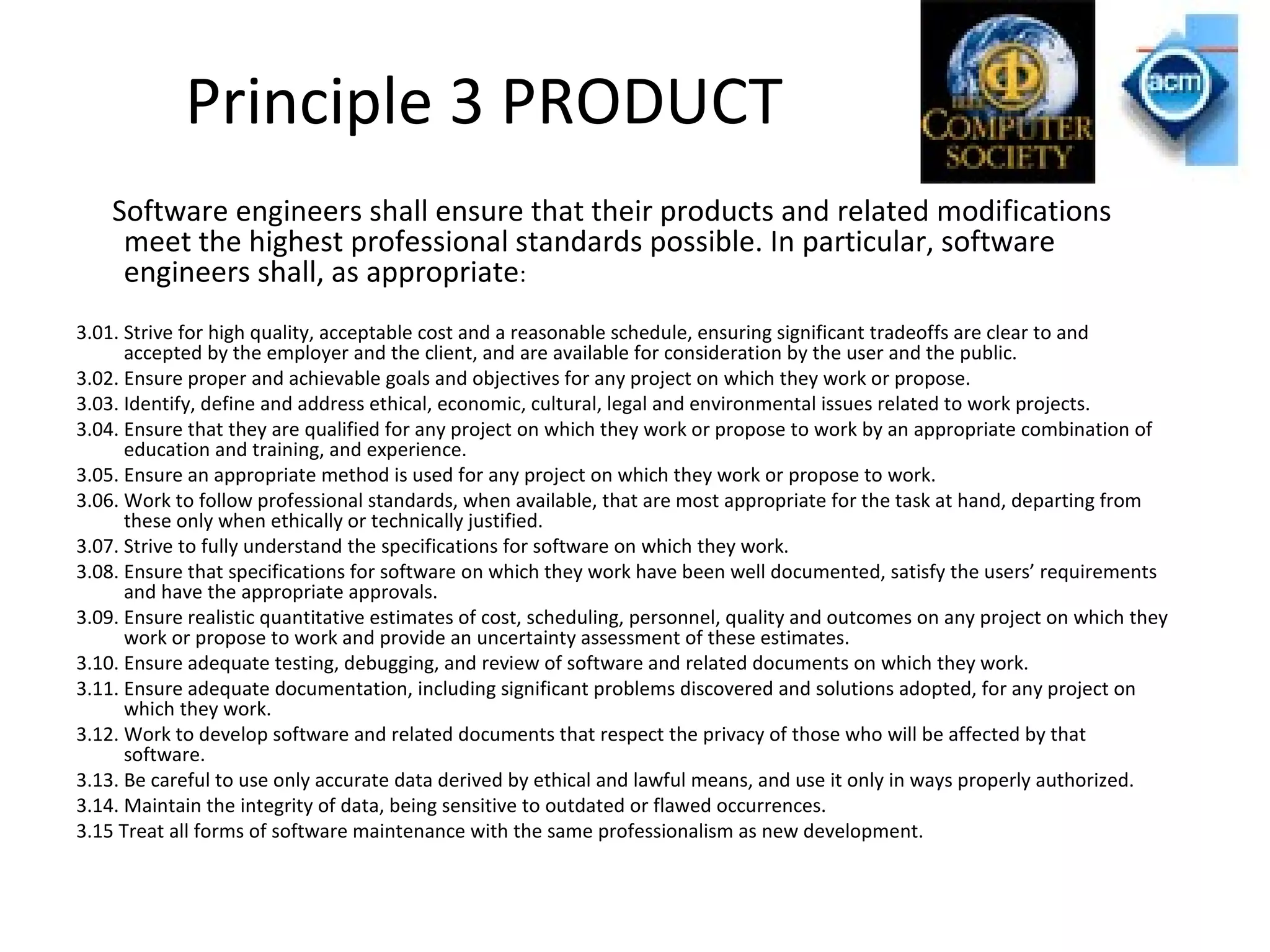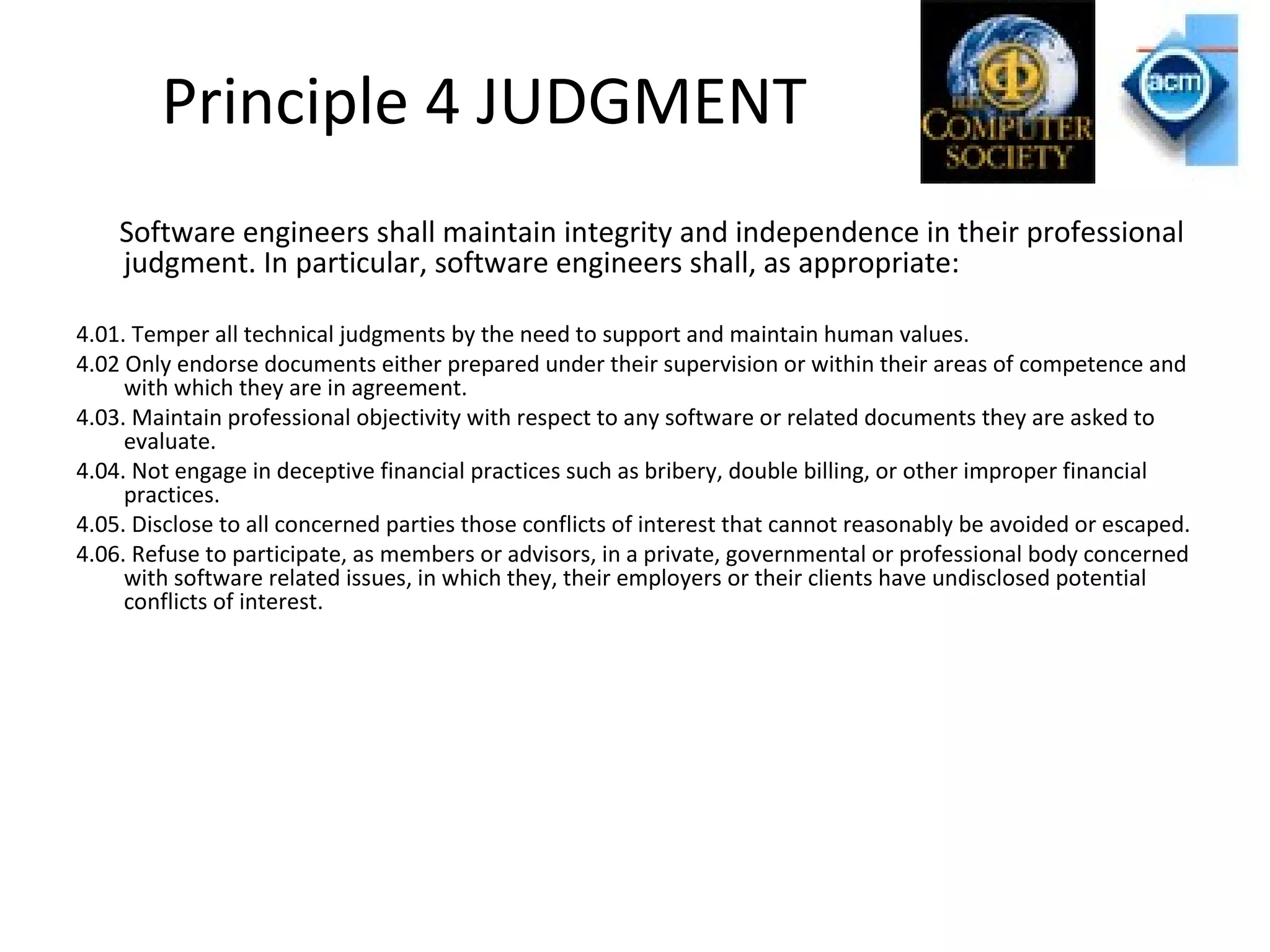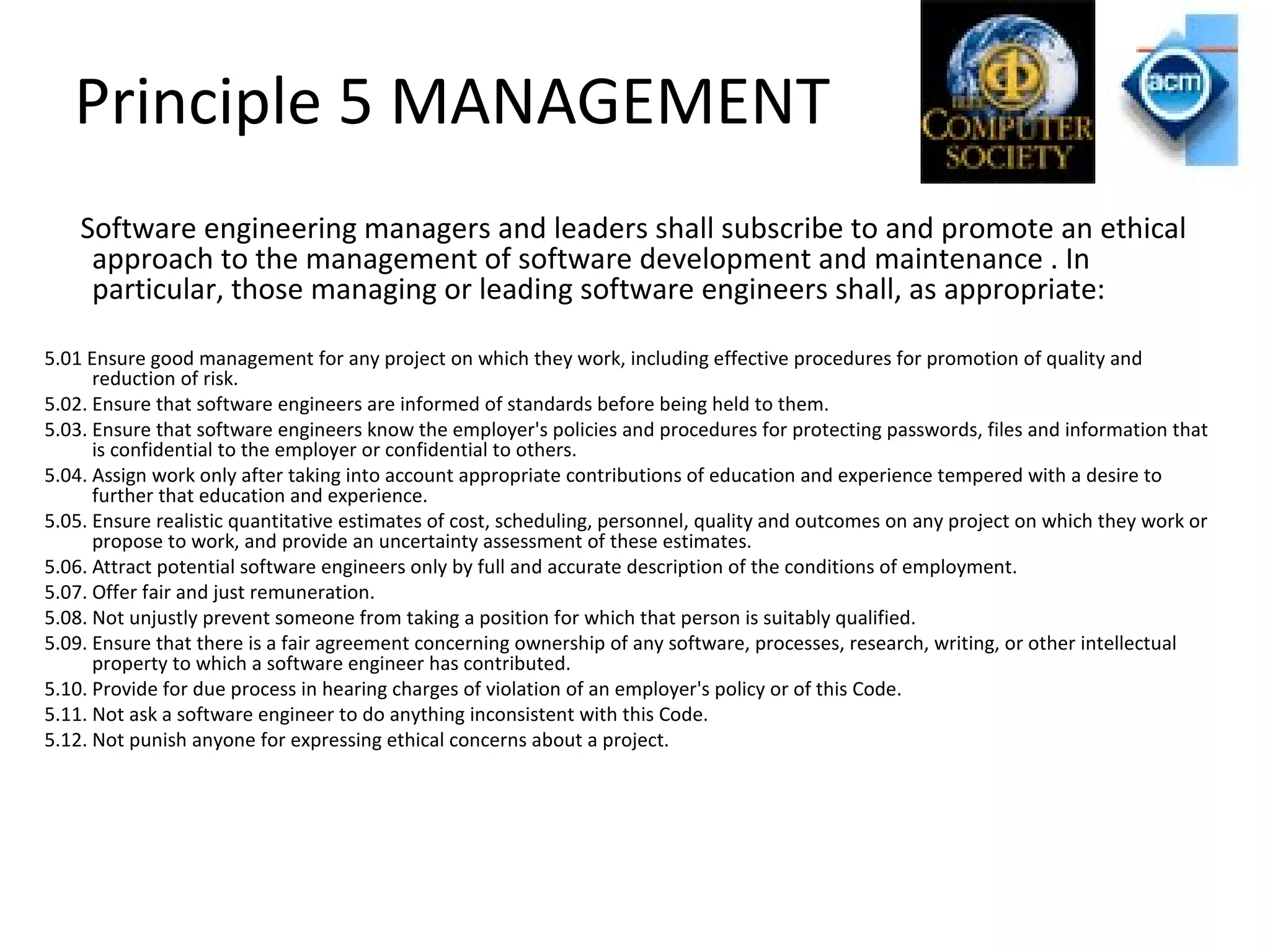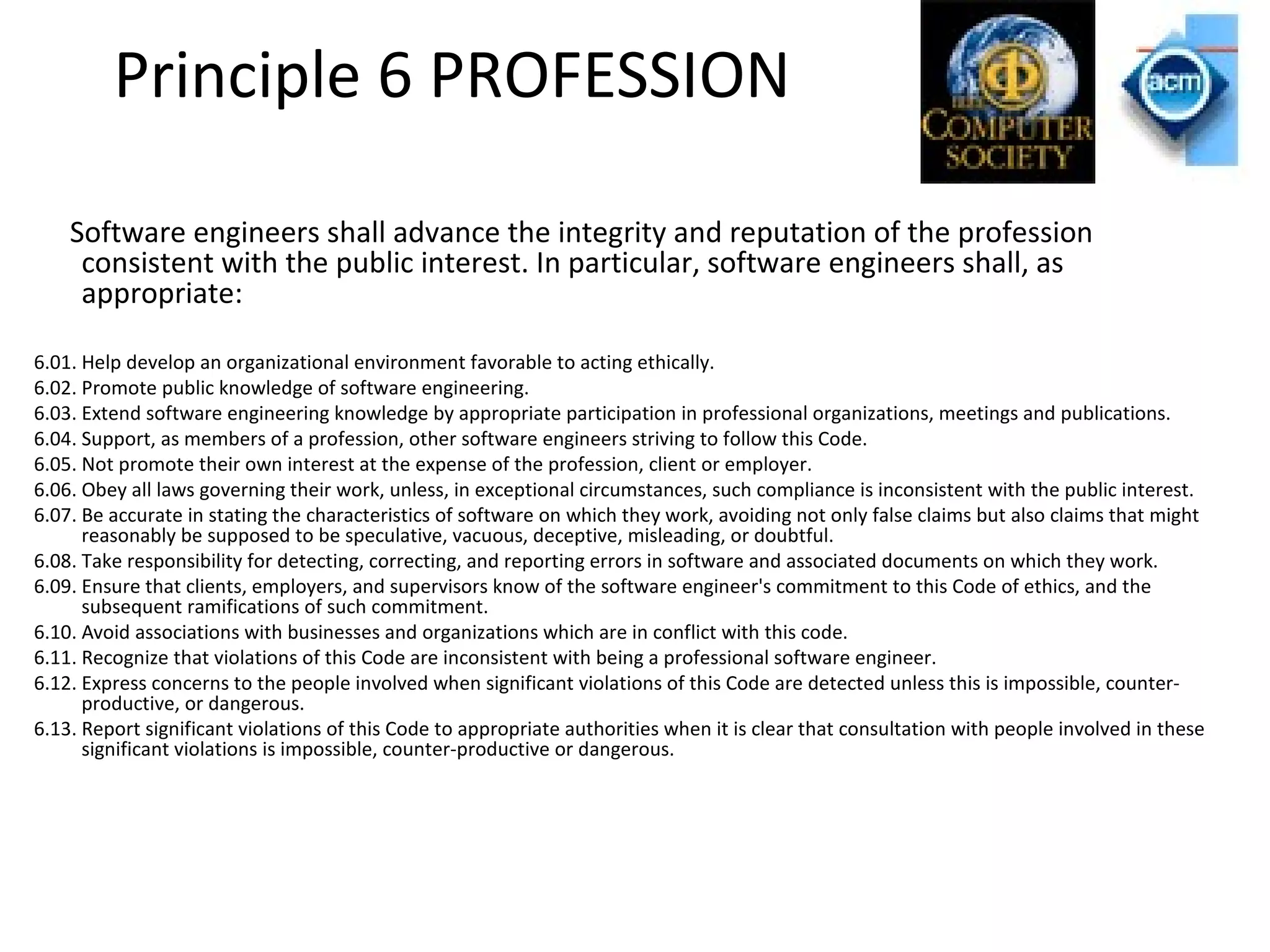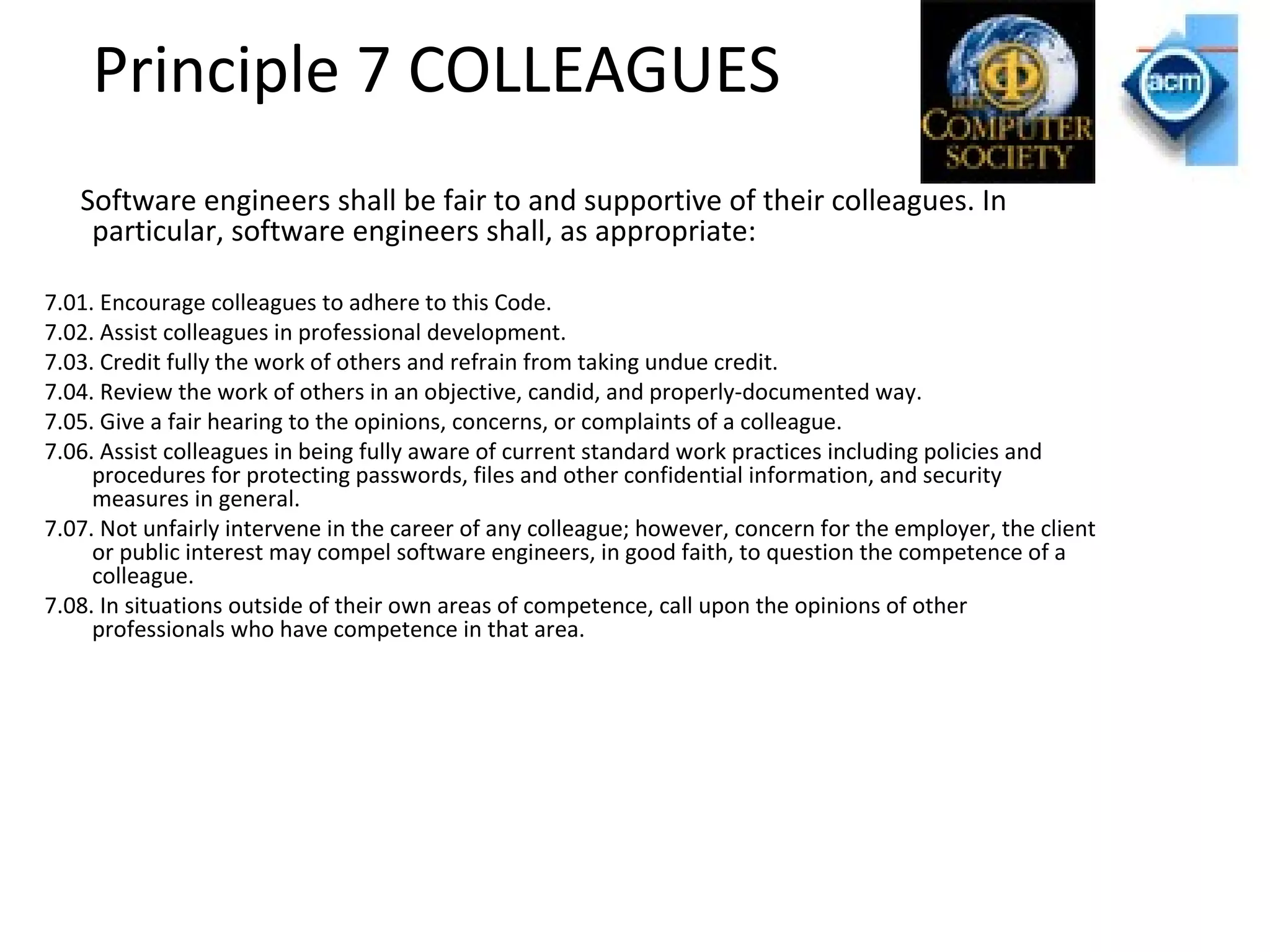The document discusses the professional responsibilities of software engineers. It begins by defining PRoSE, which stands for Professional Responsibilities of Software Engineers. It then outlines the main responsibilities as personal, social, and professional. Under professional responsibilities, it emphasizes the importance of things like producing reviewable designs, prioritizing safety and well-being of the public, and ensuring maintainability of software. It provides examples of conflicts that can arise between responsibilities and how engineers should prioritize public safety above all else. It also discusses the need for software engineering to be recognized as a licensed profession with accredited educational programs and codes of ethics like other engineering fields.
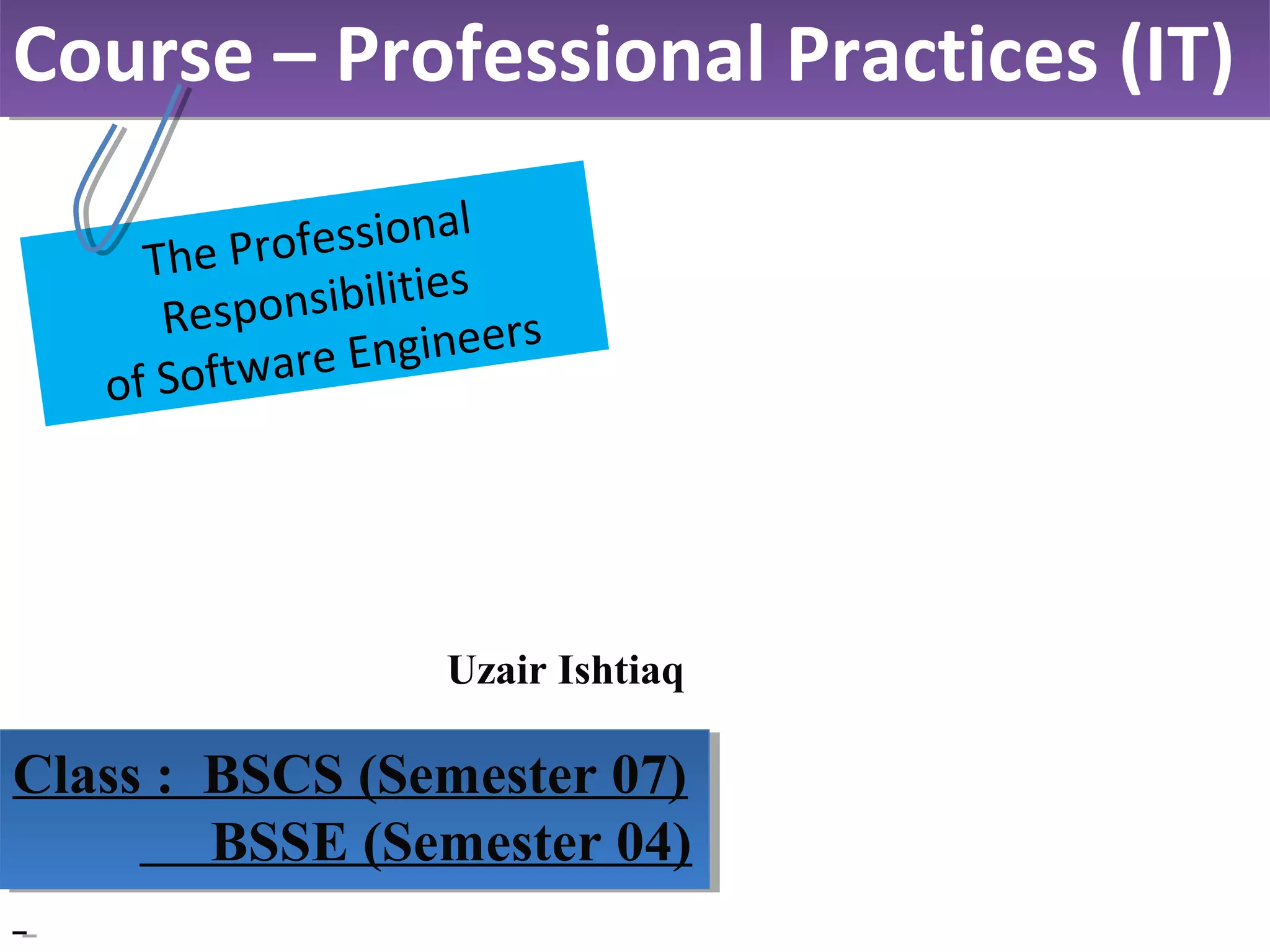
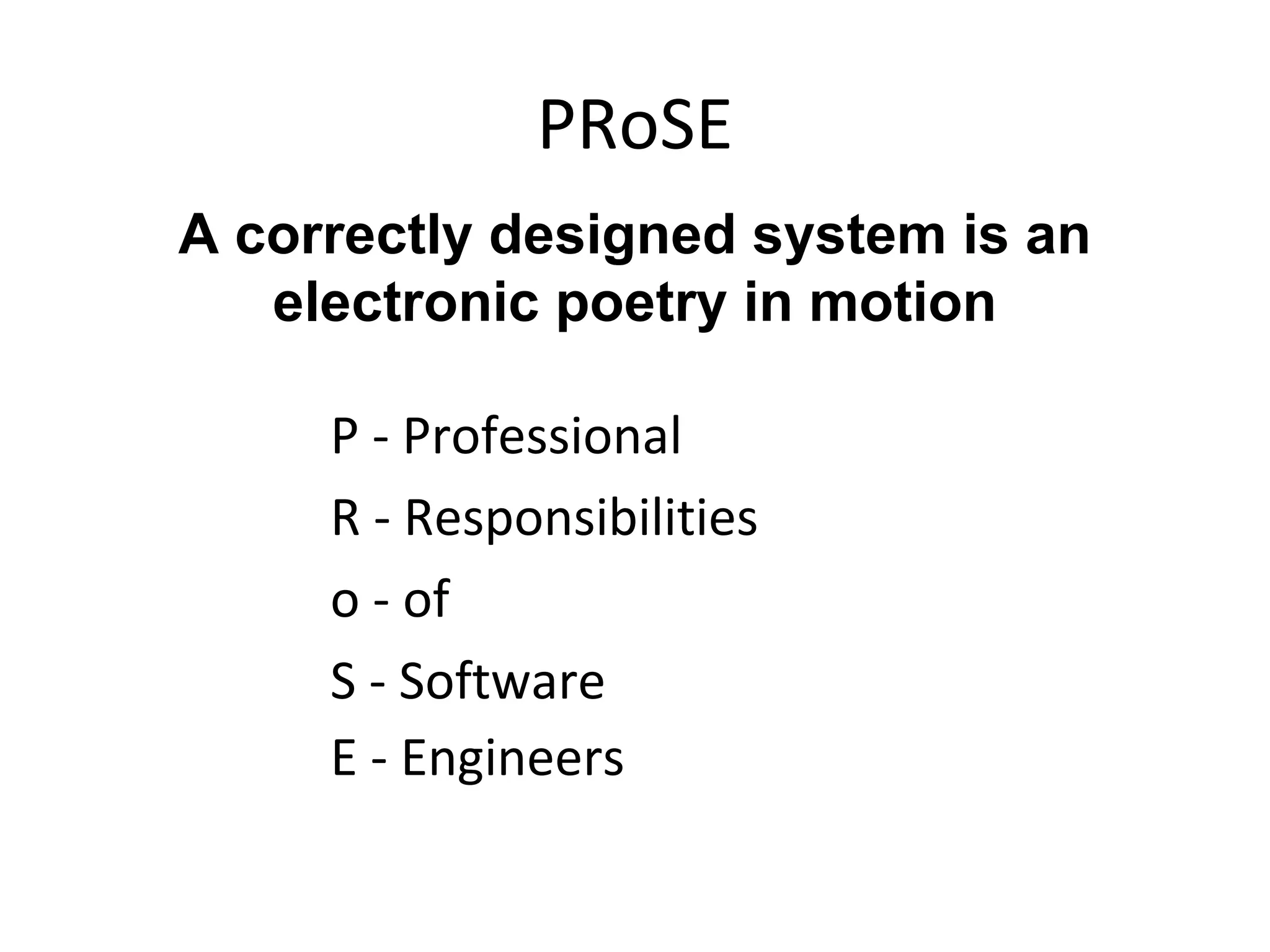
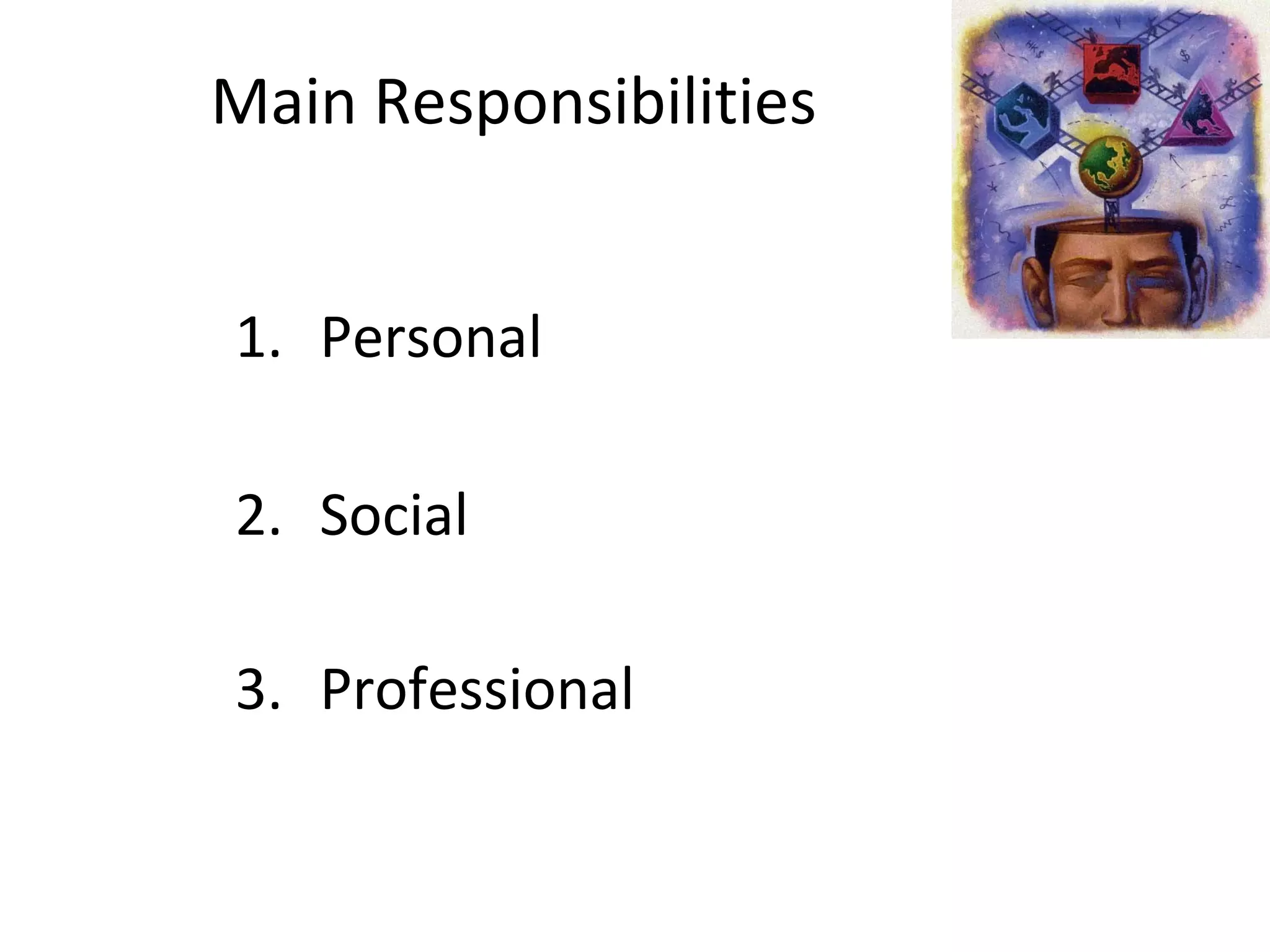
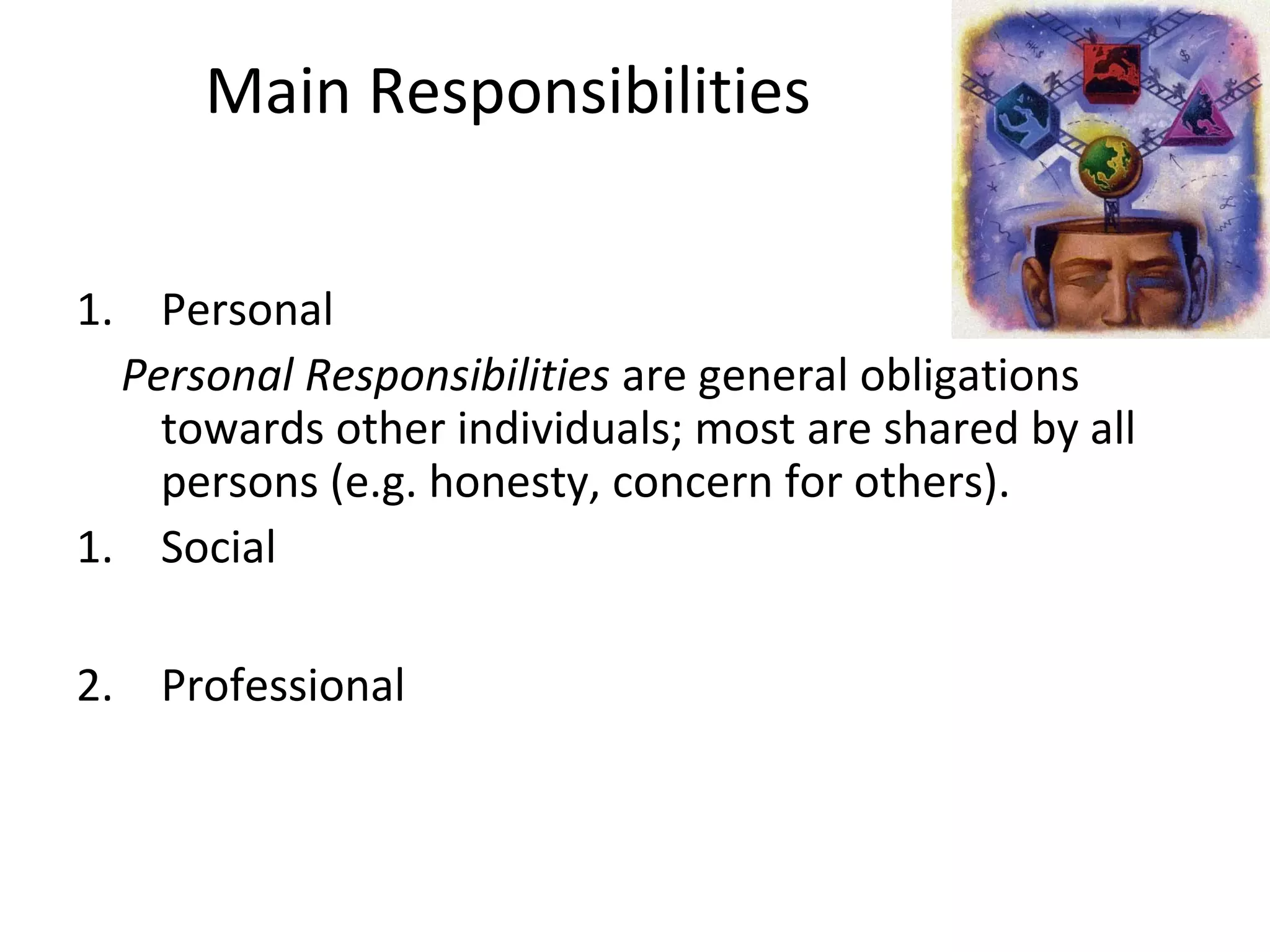
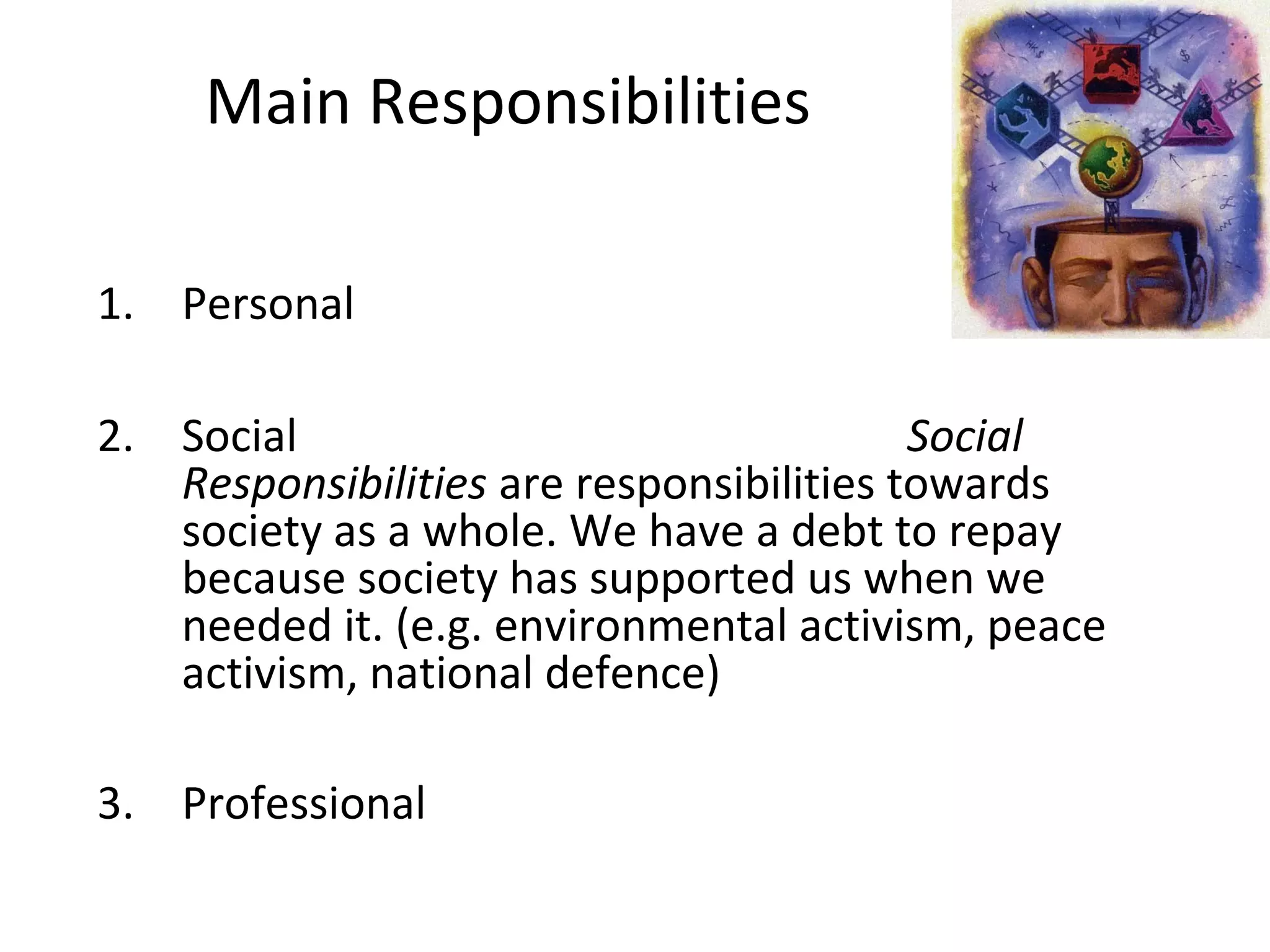

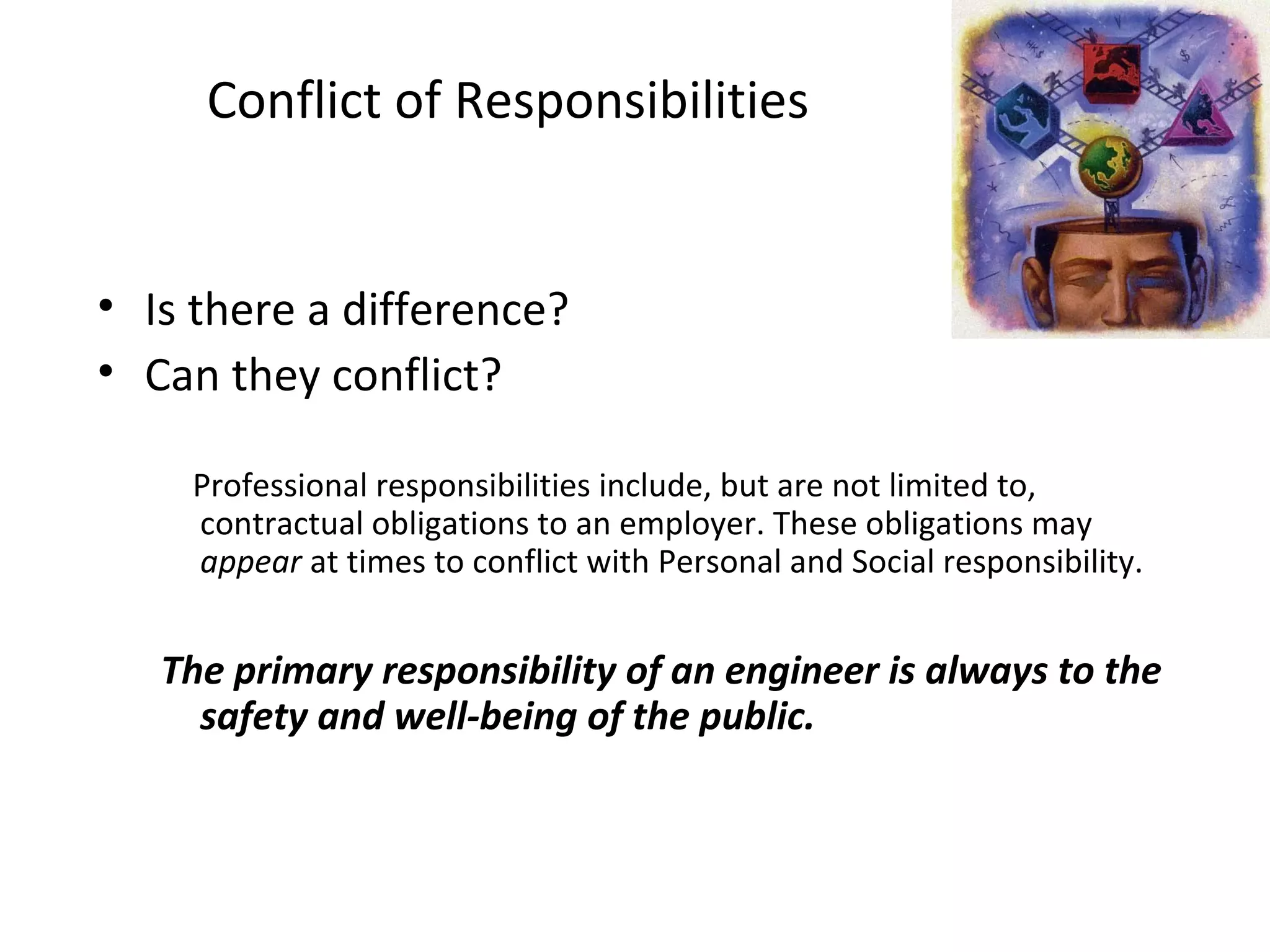
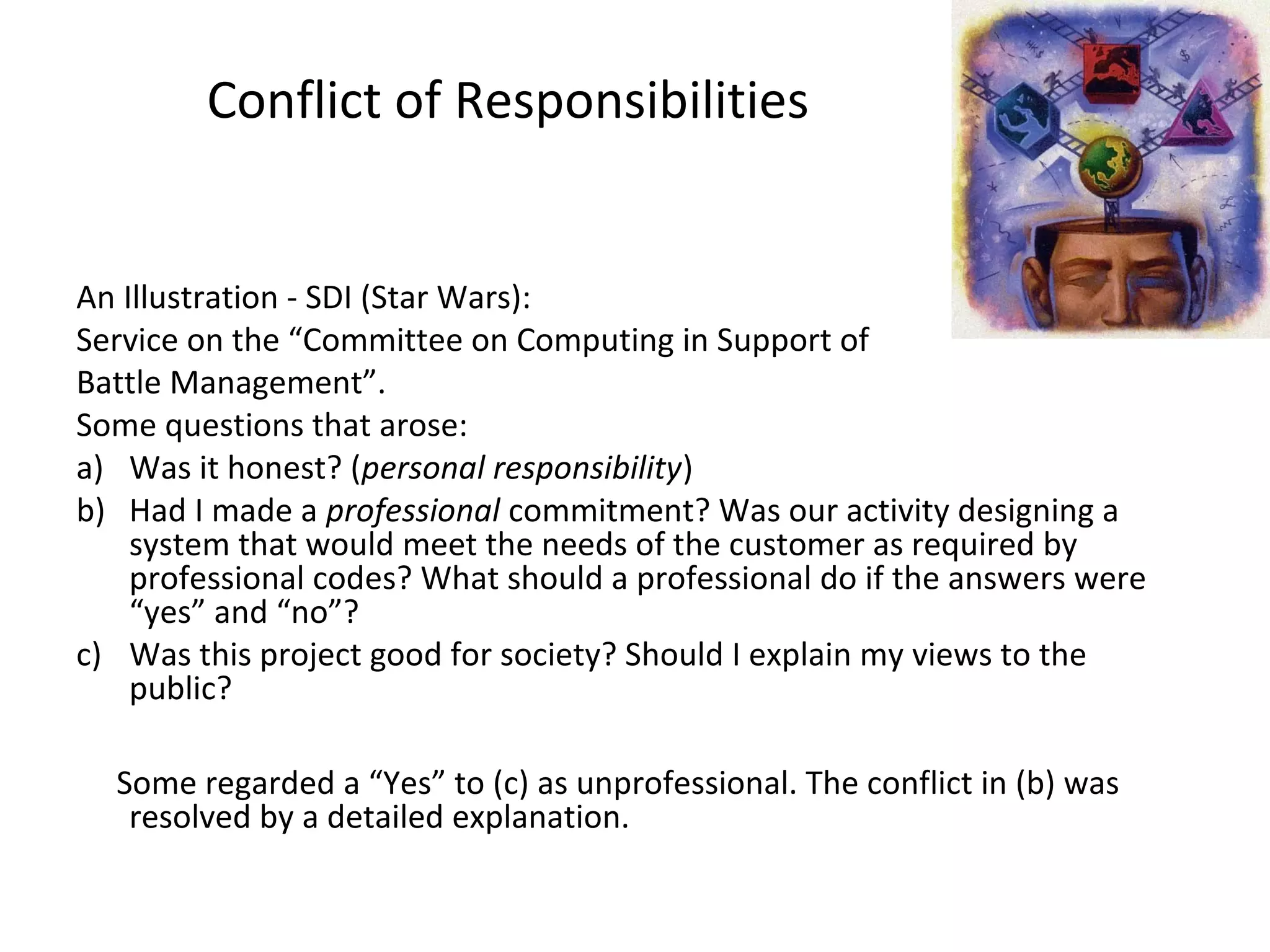
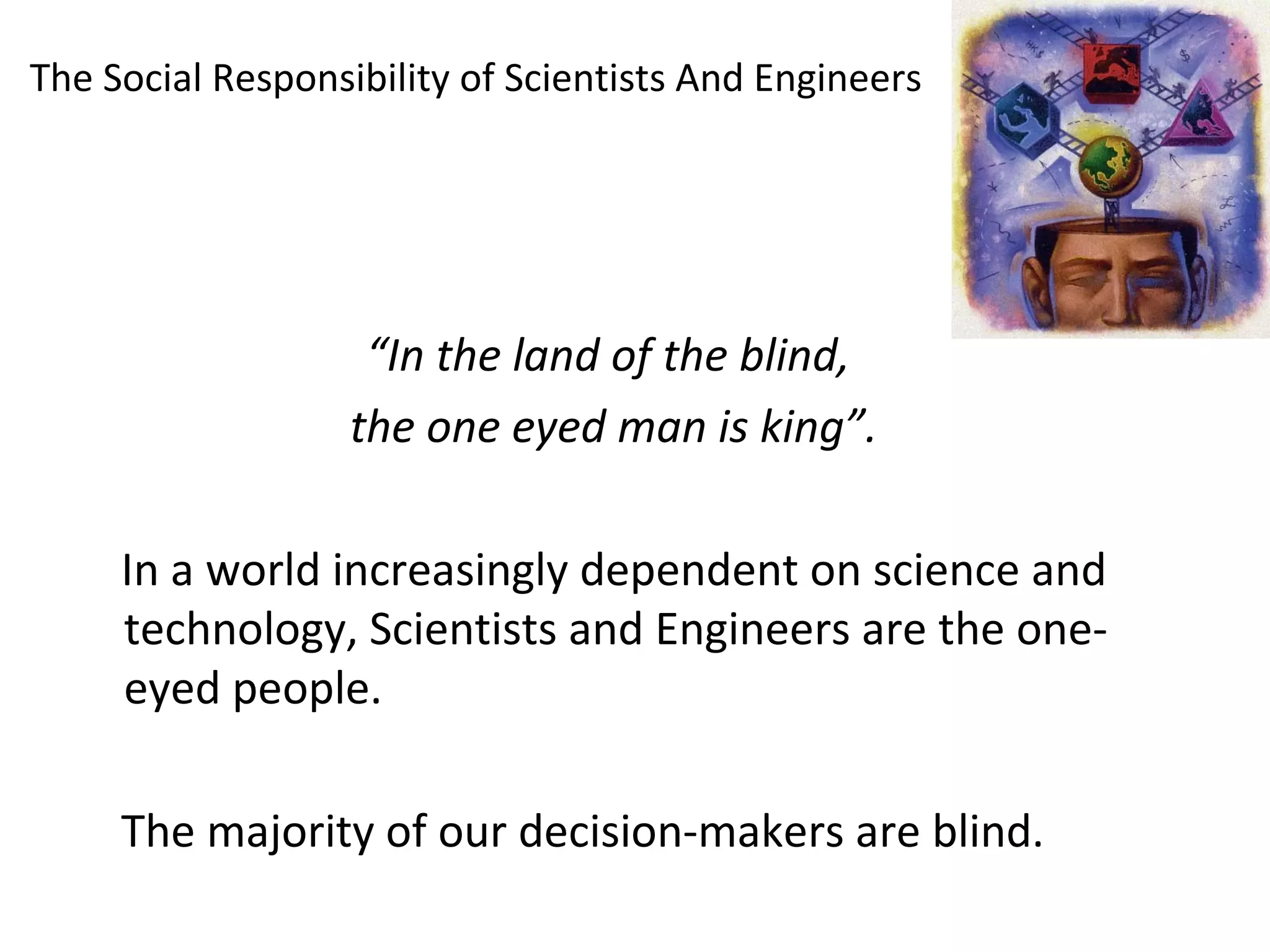
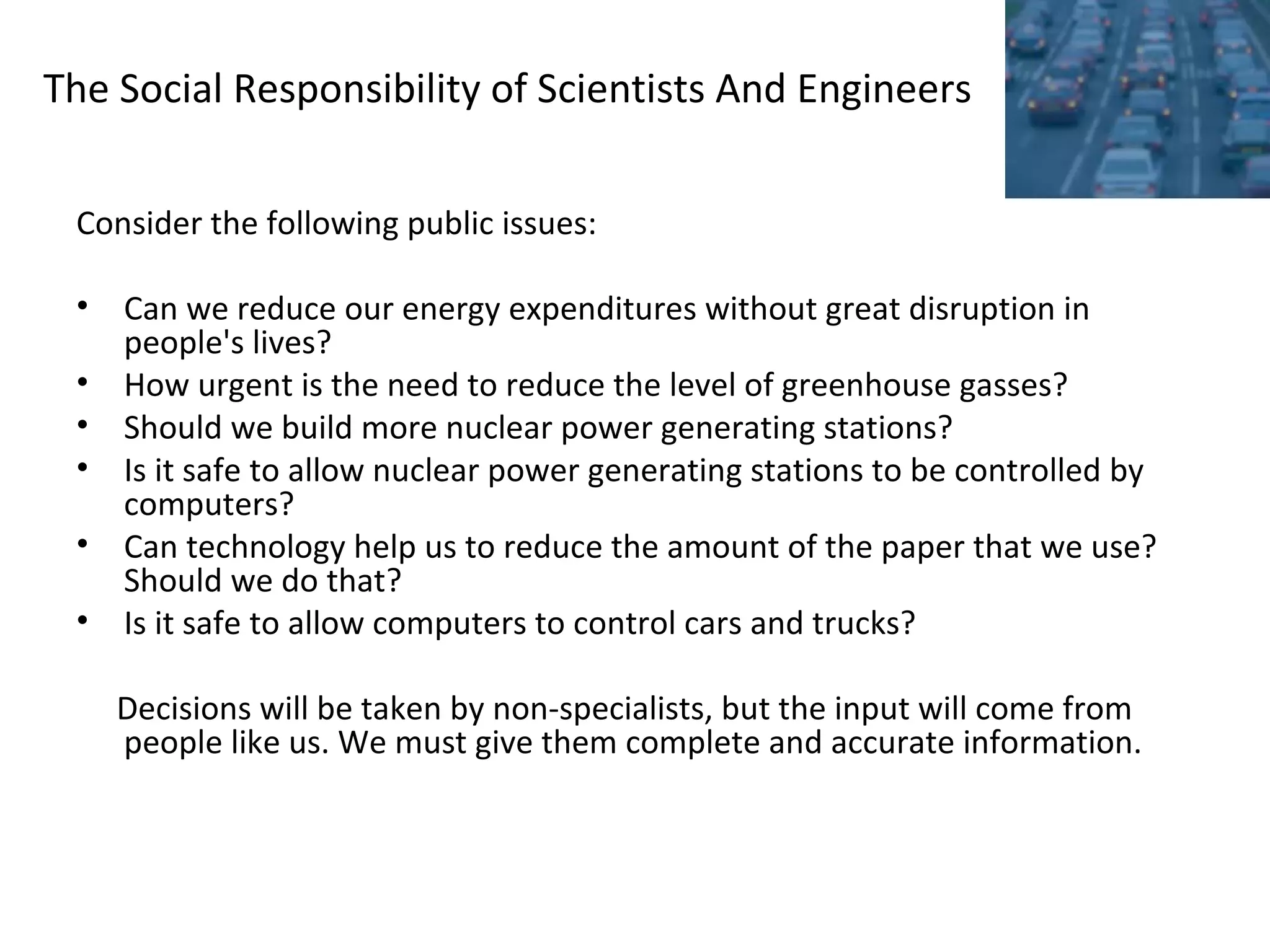
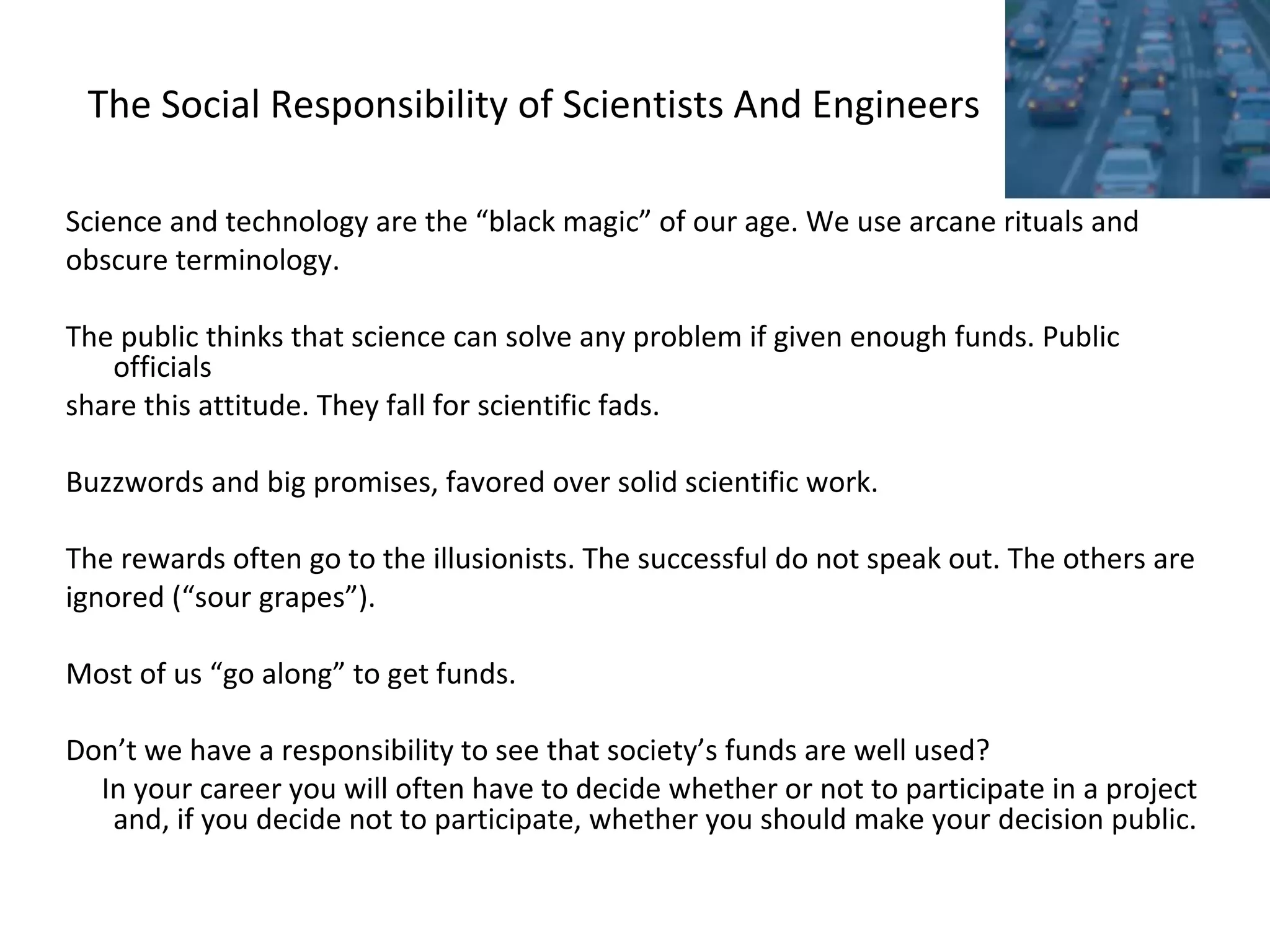
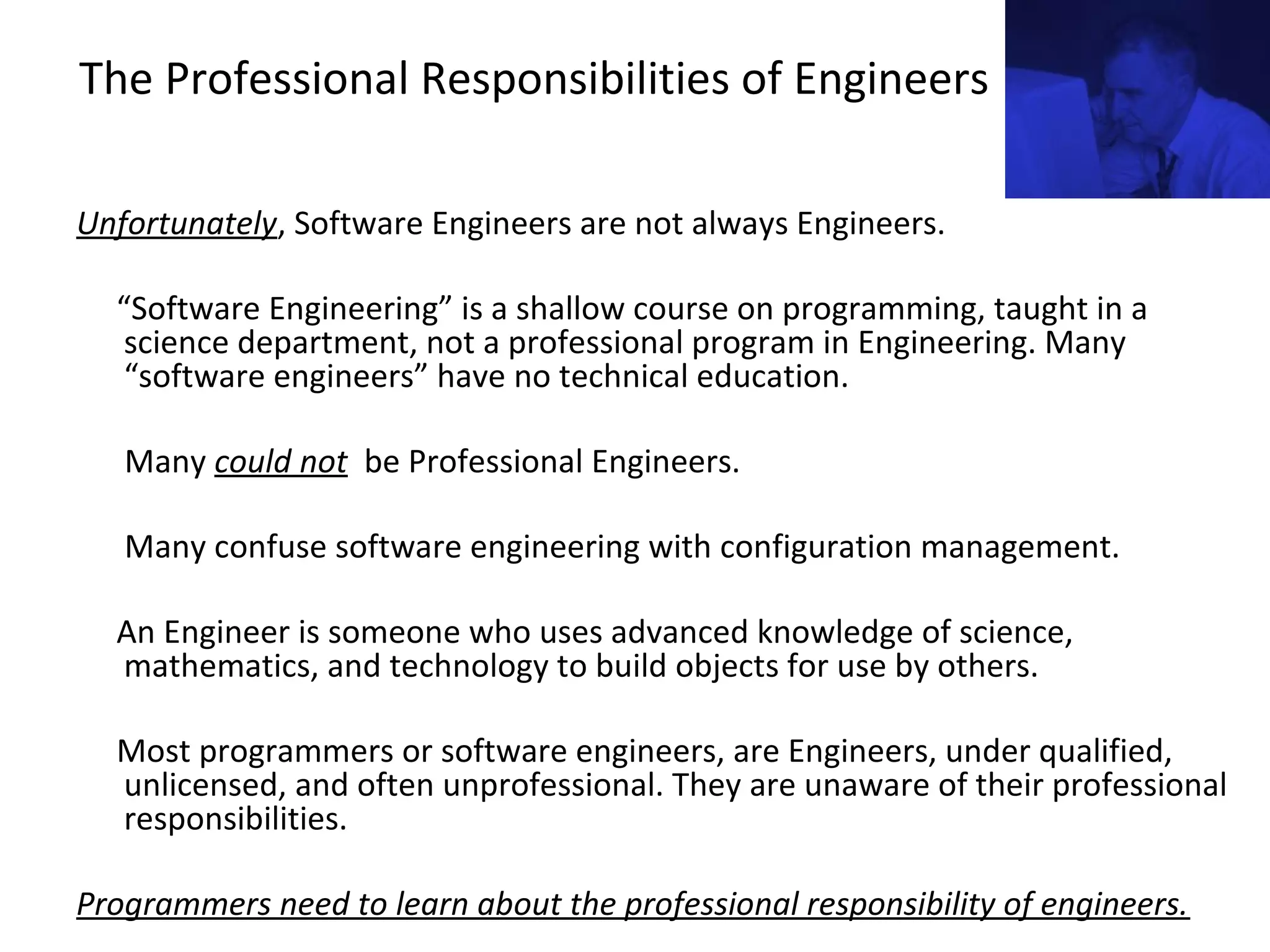

![What is the Professional Engineering Societies ?
1. Professional Engineering Societies were established by
legislation to assure competence and awareness of
professional responsibilities.
2. Regulations require that certain products be produced or
approved by a recognized Professional Engineer.
3. There is a separate committee to accredit programs.
Accreditation is a very serious process. Graduates of
accredited programs have an easier path to recognition as a
Professional Engineer. [5]
An exam on responsibilities is required in any case. [6]](https://image.slidesharecdn.com/professionalresponsibilitiesofsoftwareengineering-180911040509/75/Professional-responsibilities-of-software-engineering-14-2048.jpg)

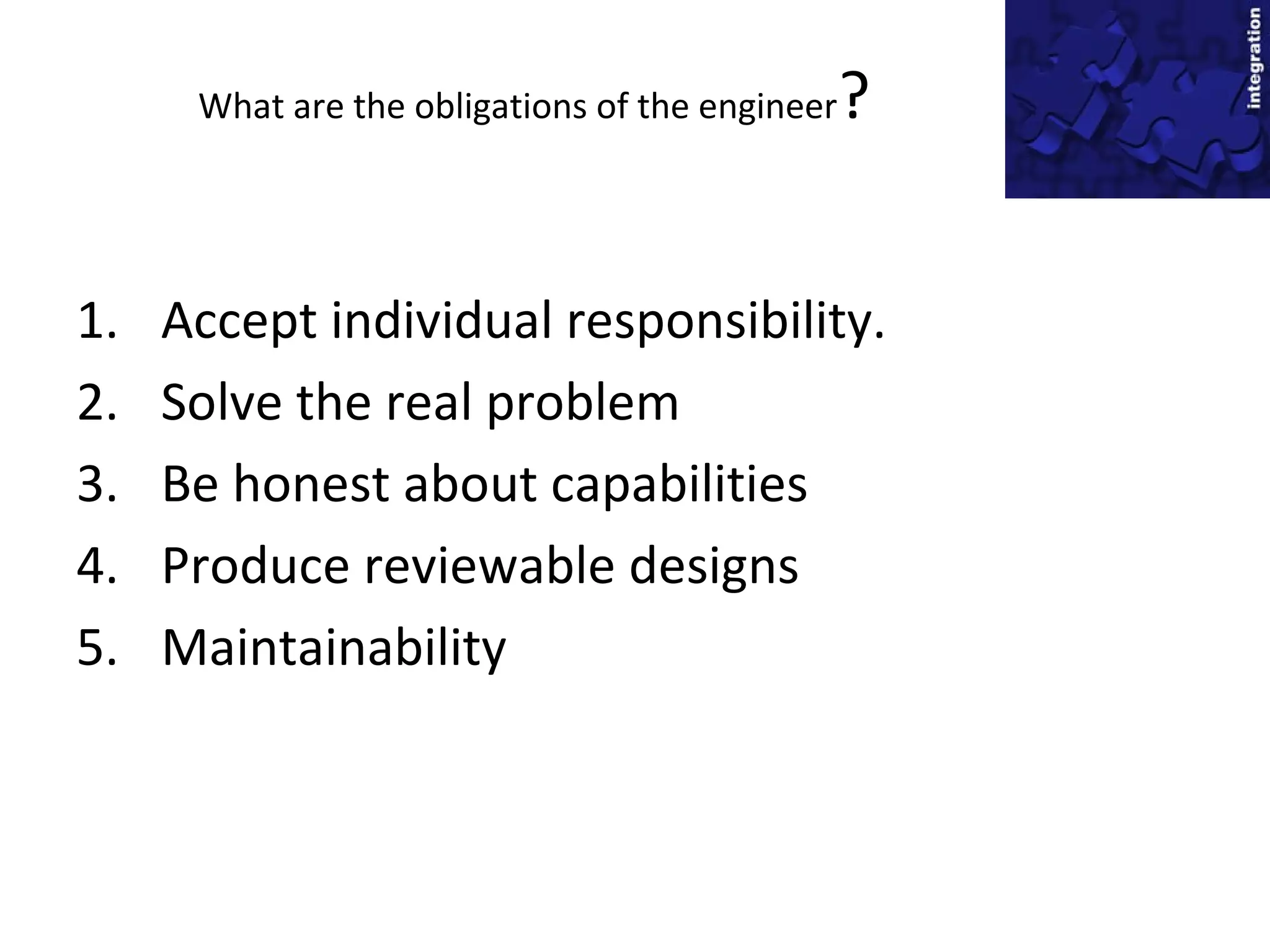
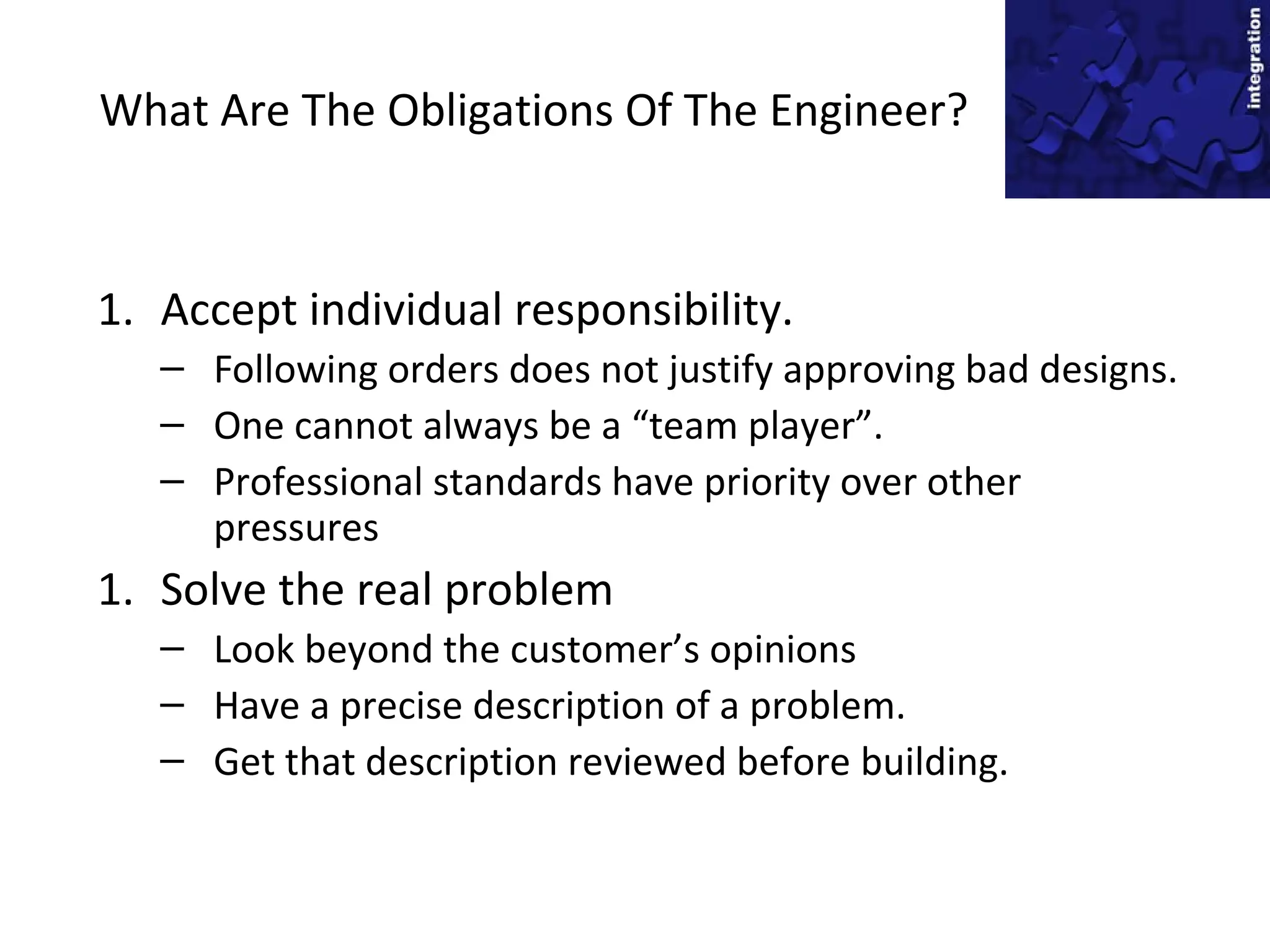
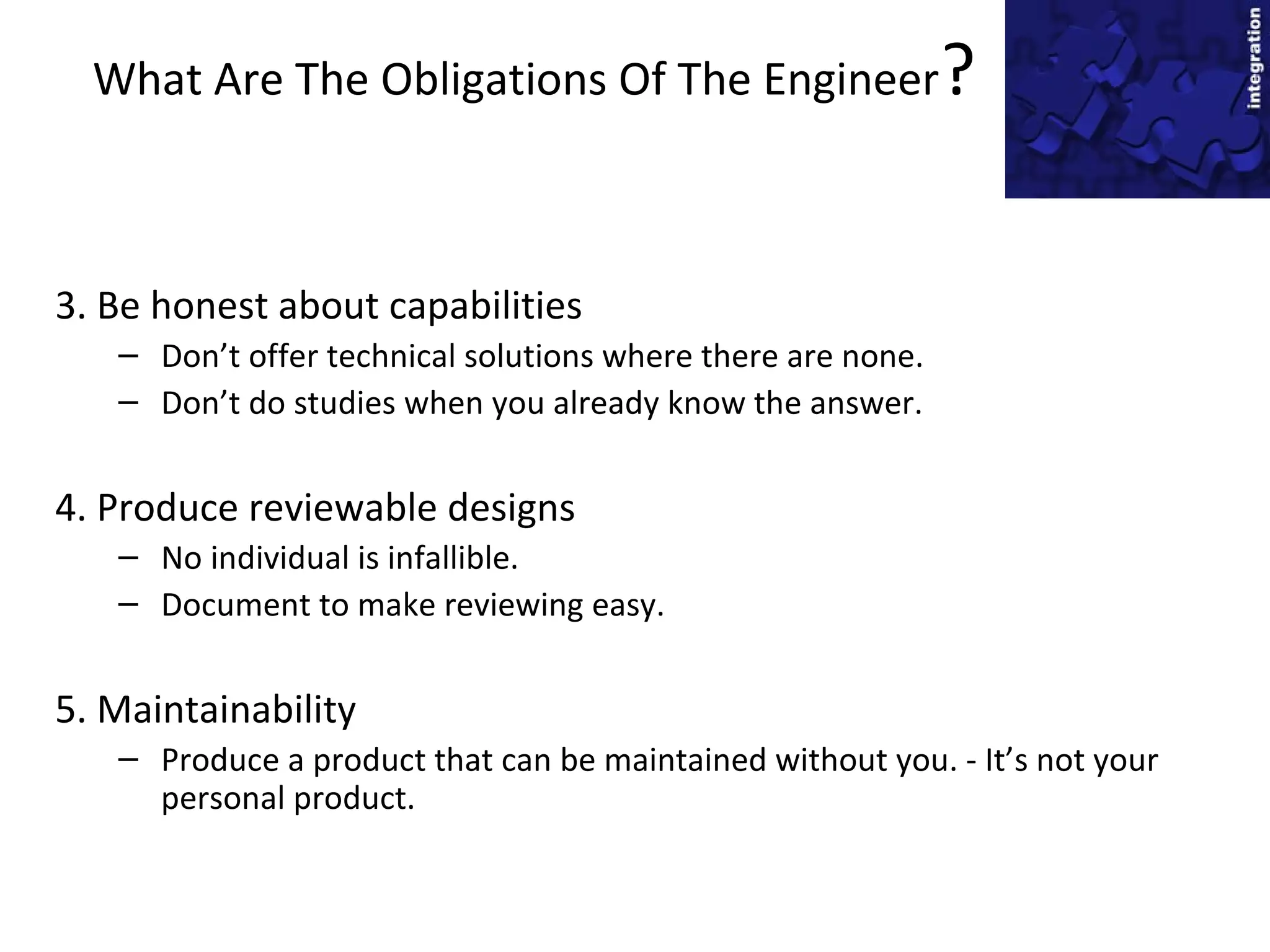
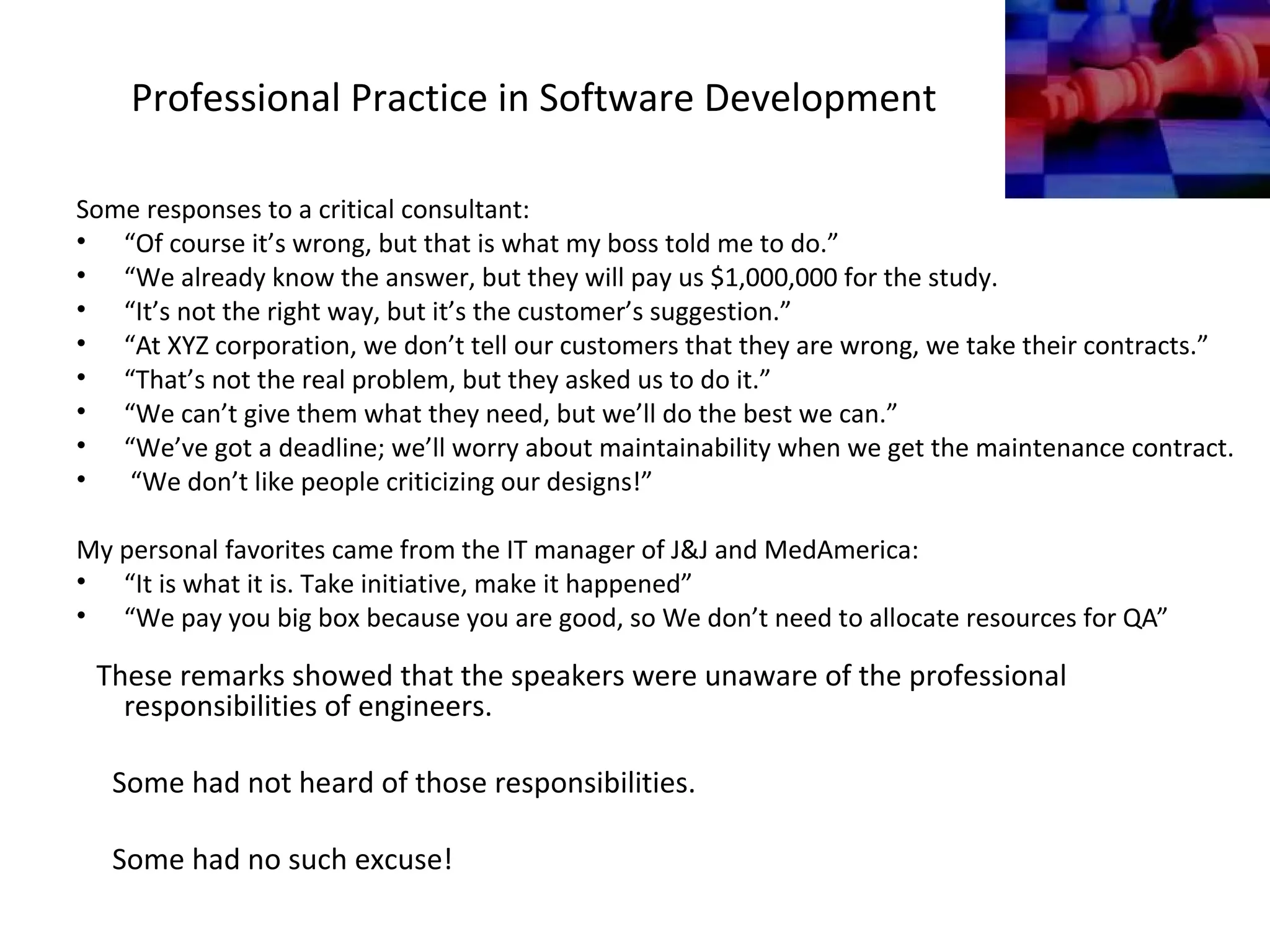
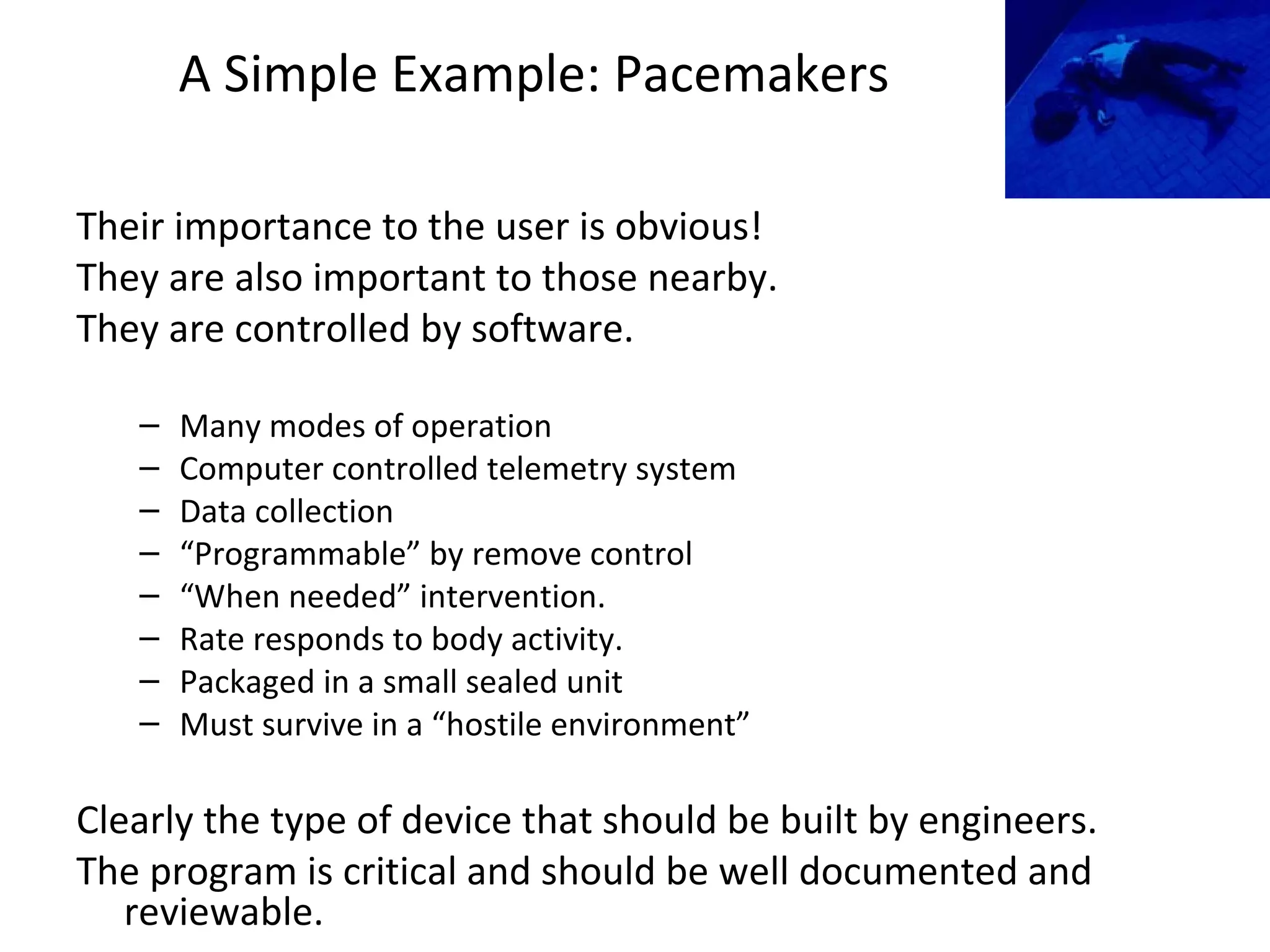
![What Should be Done for Pacemaker Software?
1. Programmer should have a precise description of the environment and
requirements [7]
2. Black box description should have been produced for review.
3. Document should have been reviewable and reviewed by Cardiologists.
4. The code should have been documented in a way that permitted
systematic review and revision.[8]
5. Code should have been subject to systematic inspection.
6. Doctor should have been provide with well-organized precise
documentation that explained the behavior of the device to him.
All of these things would be expected of a professional engineer.](https://image.slidesharecdn.com/professionalresponsibilitiesofsoftwareengineering-180911040509/75/Professional-responsibilities-of-software-engineering-21-2048.jpg)
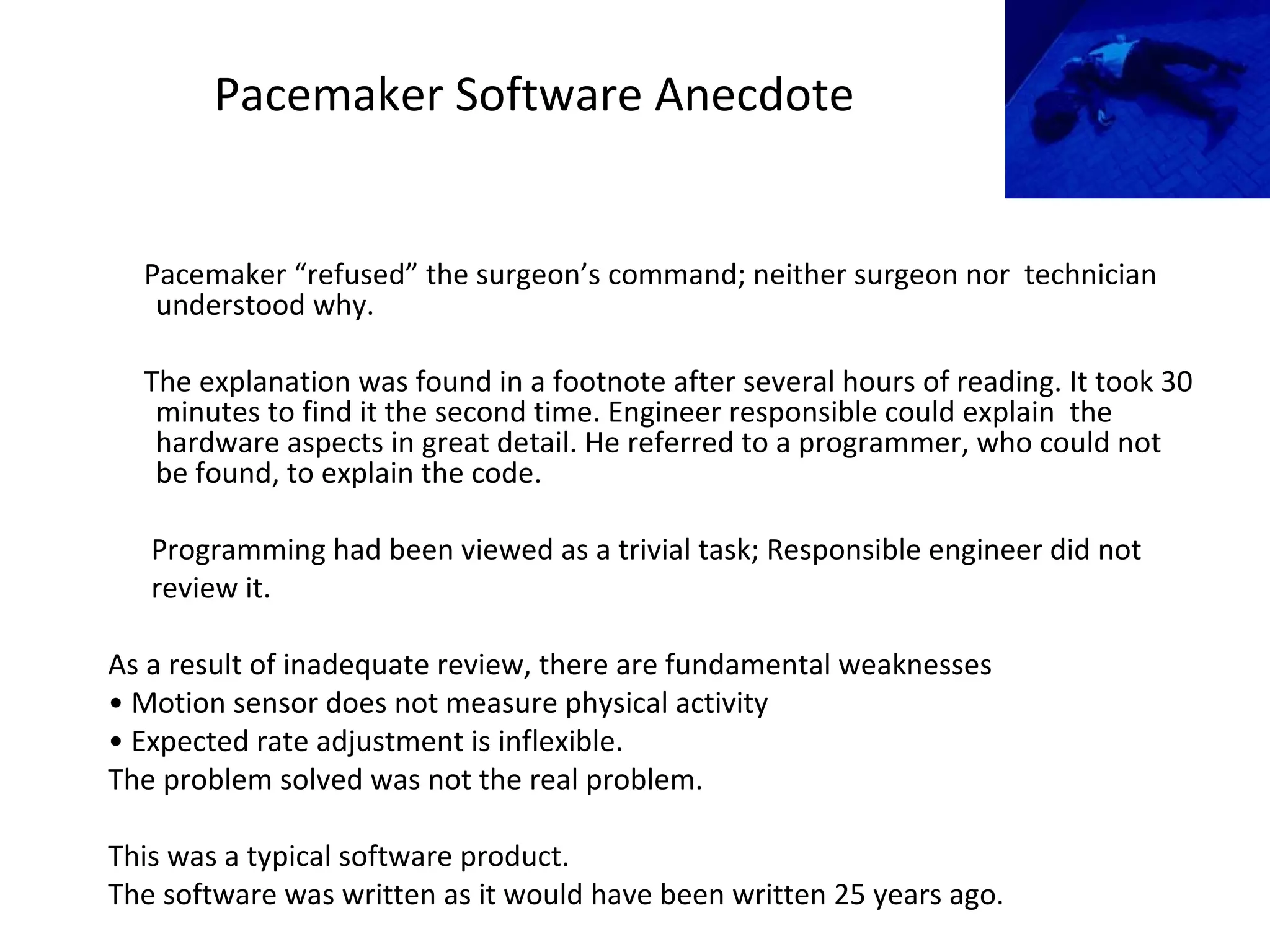
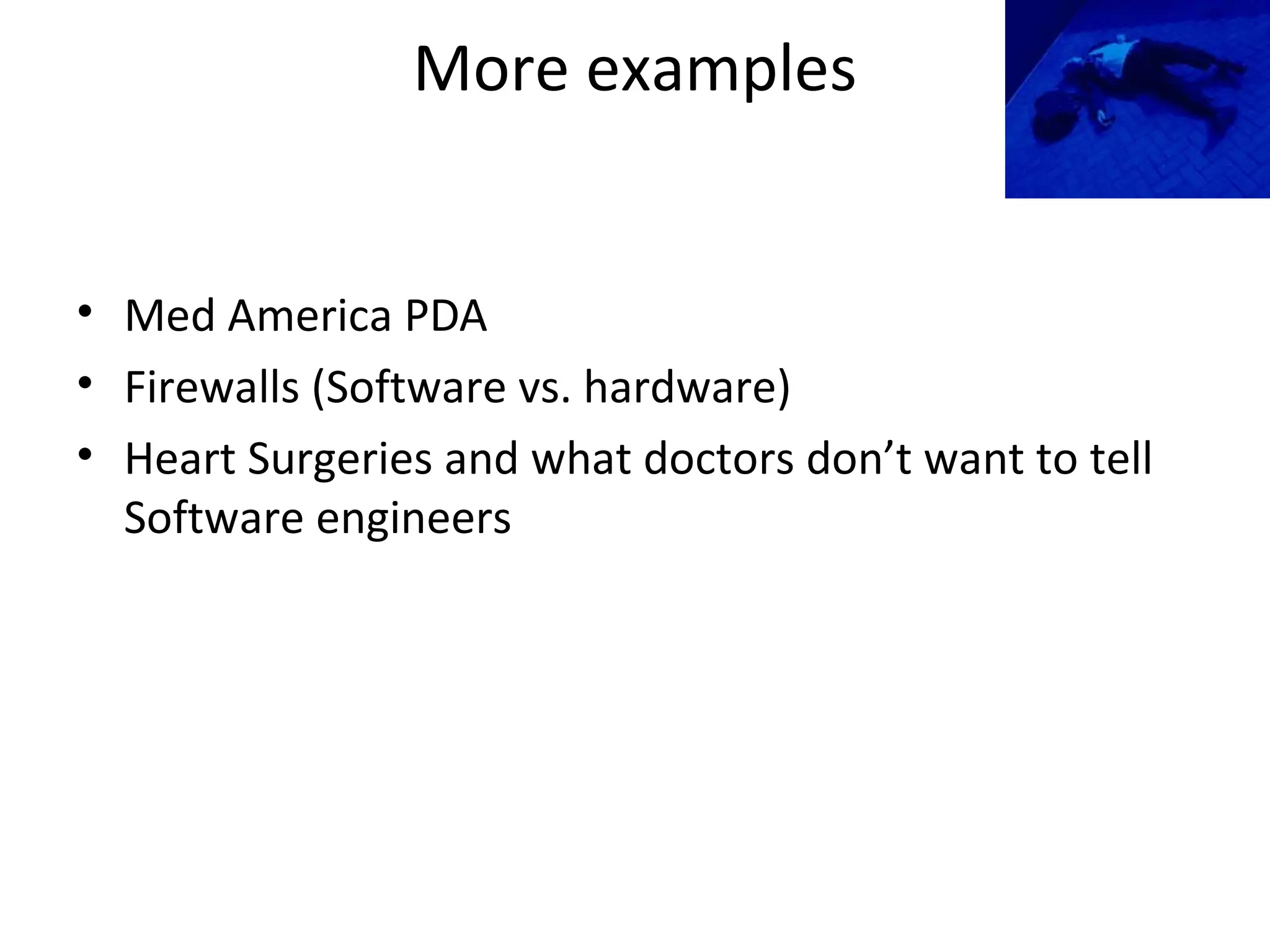
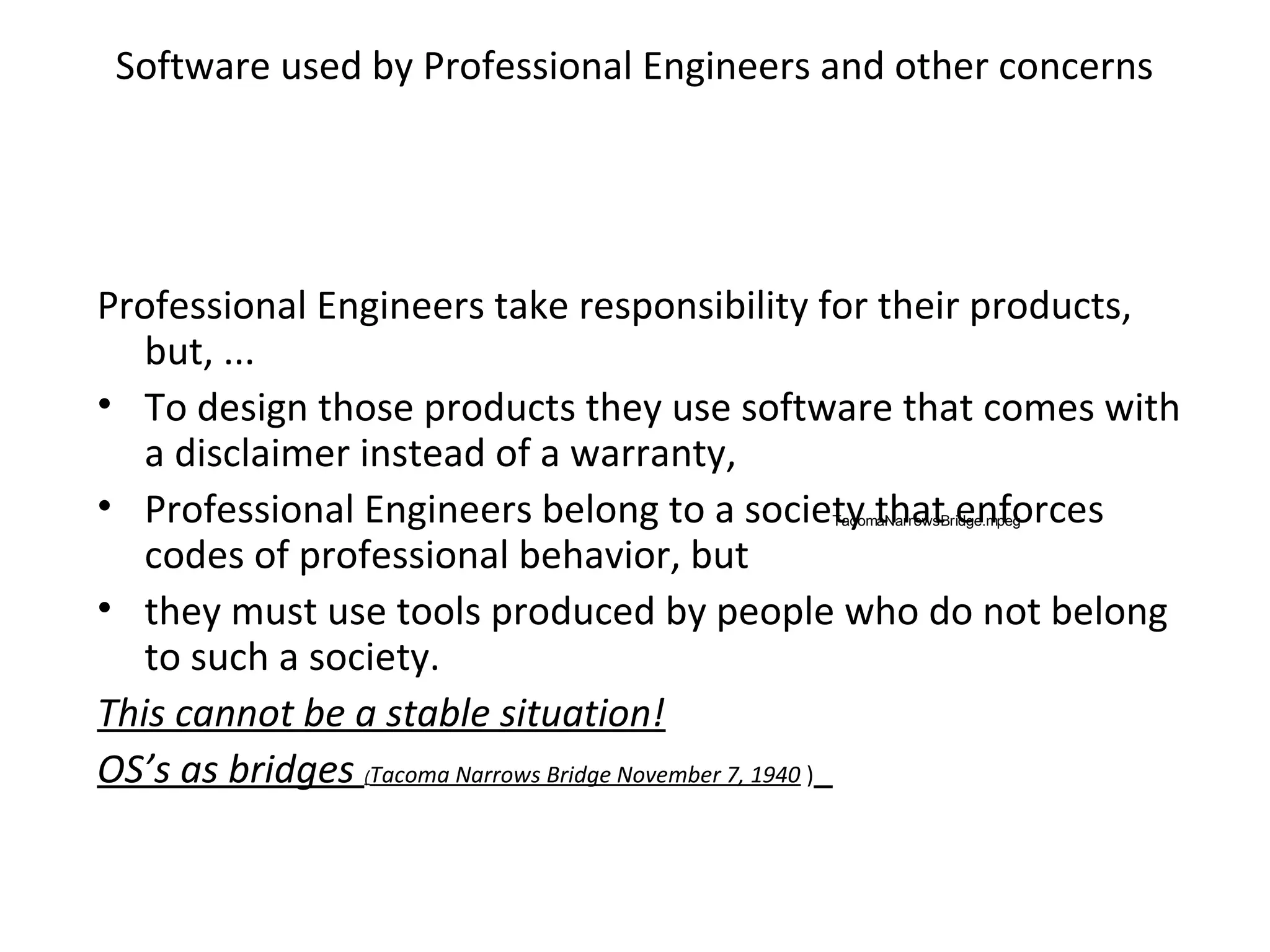
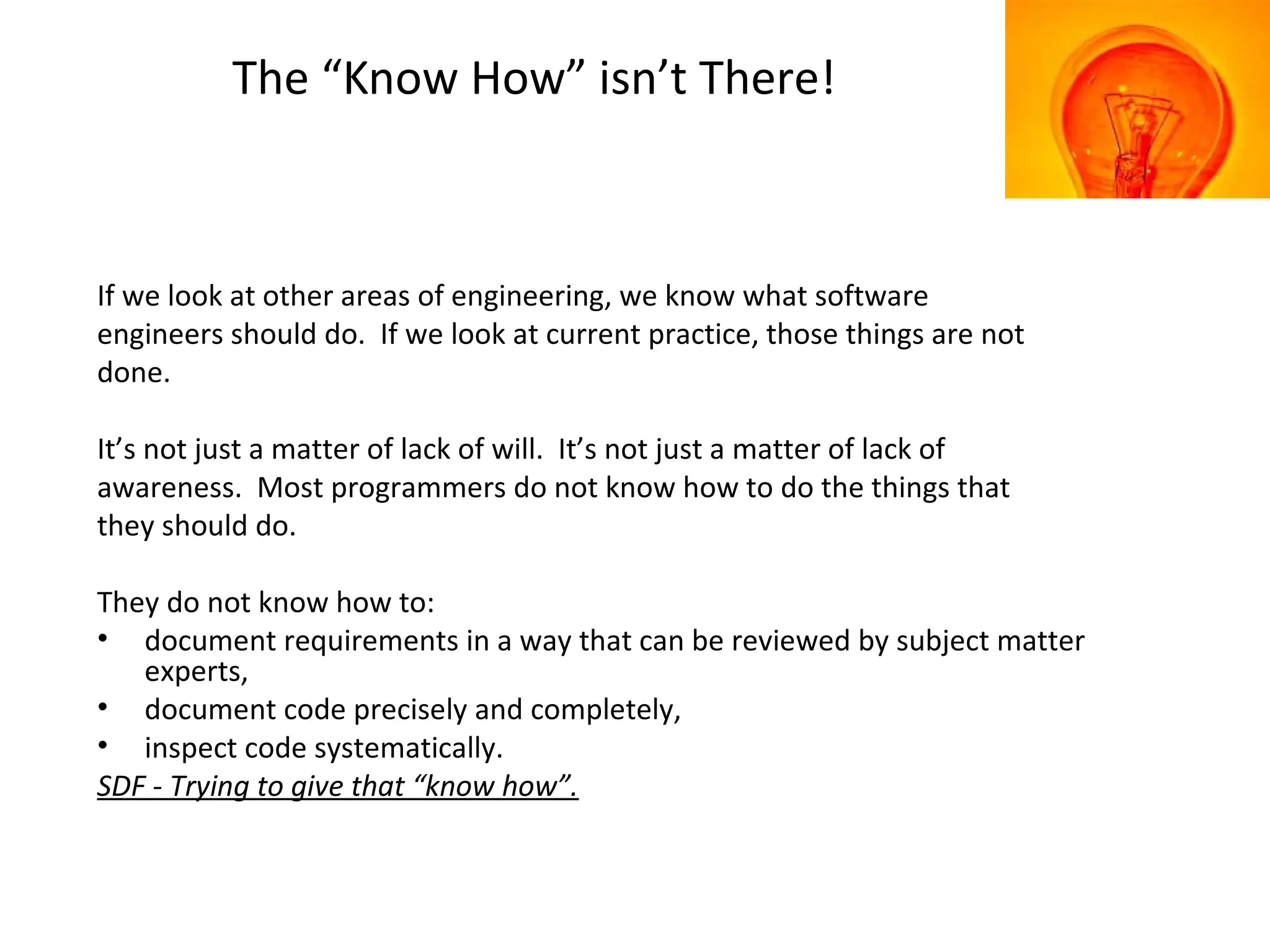

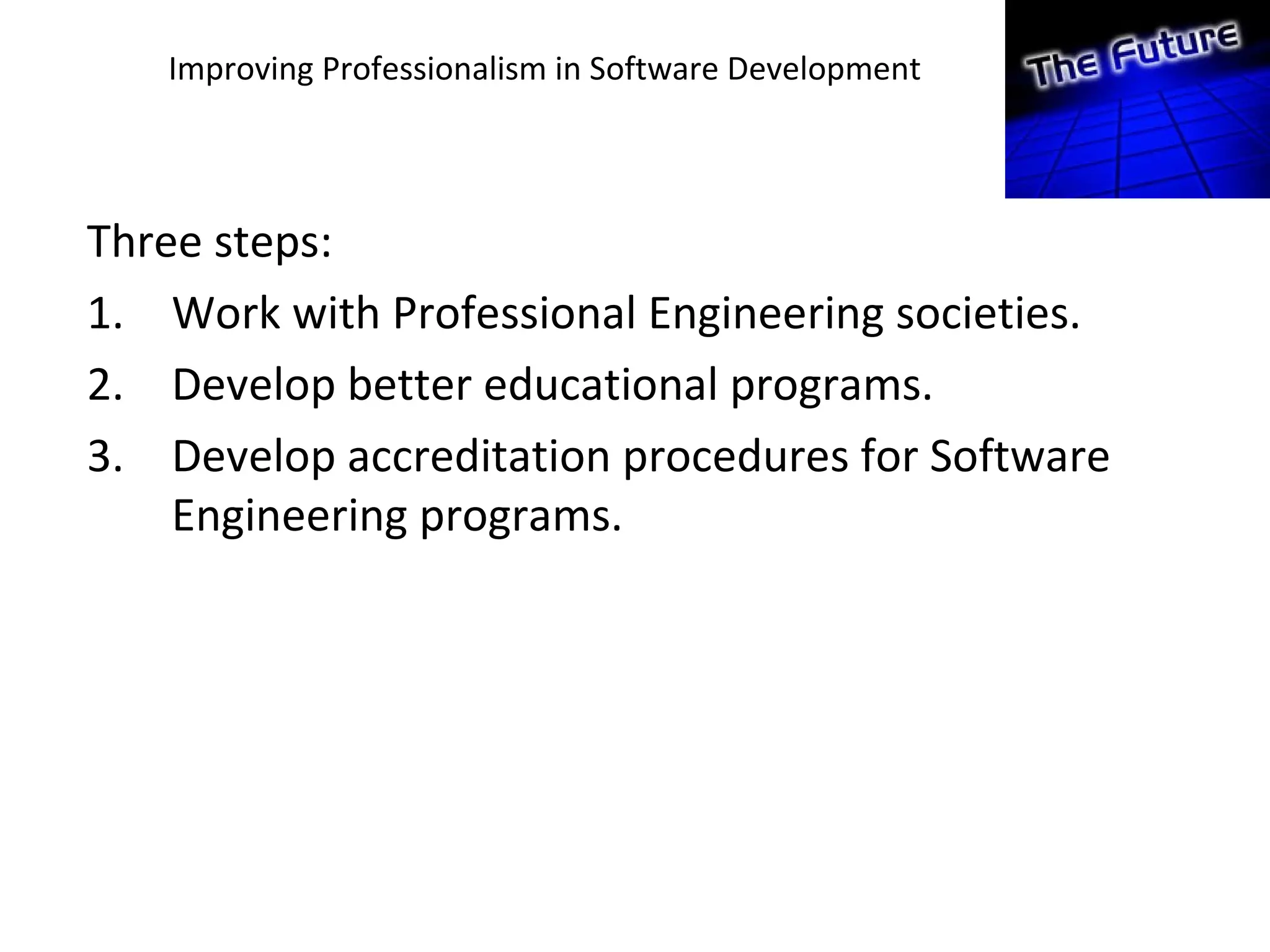
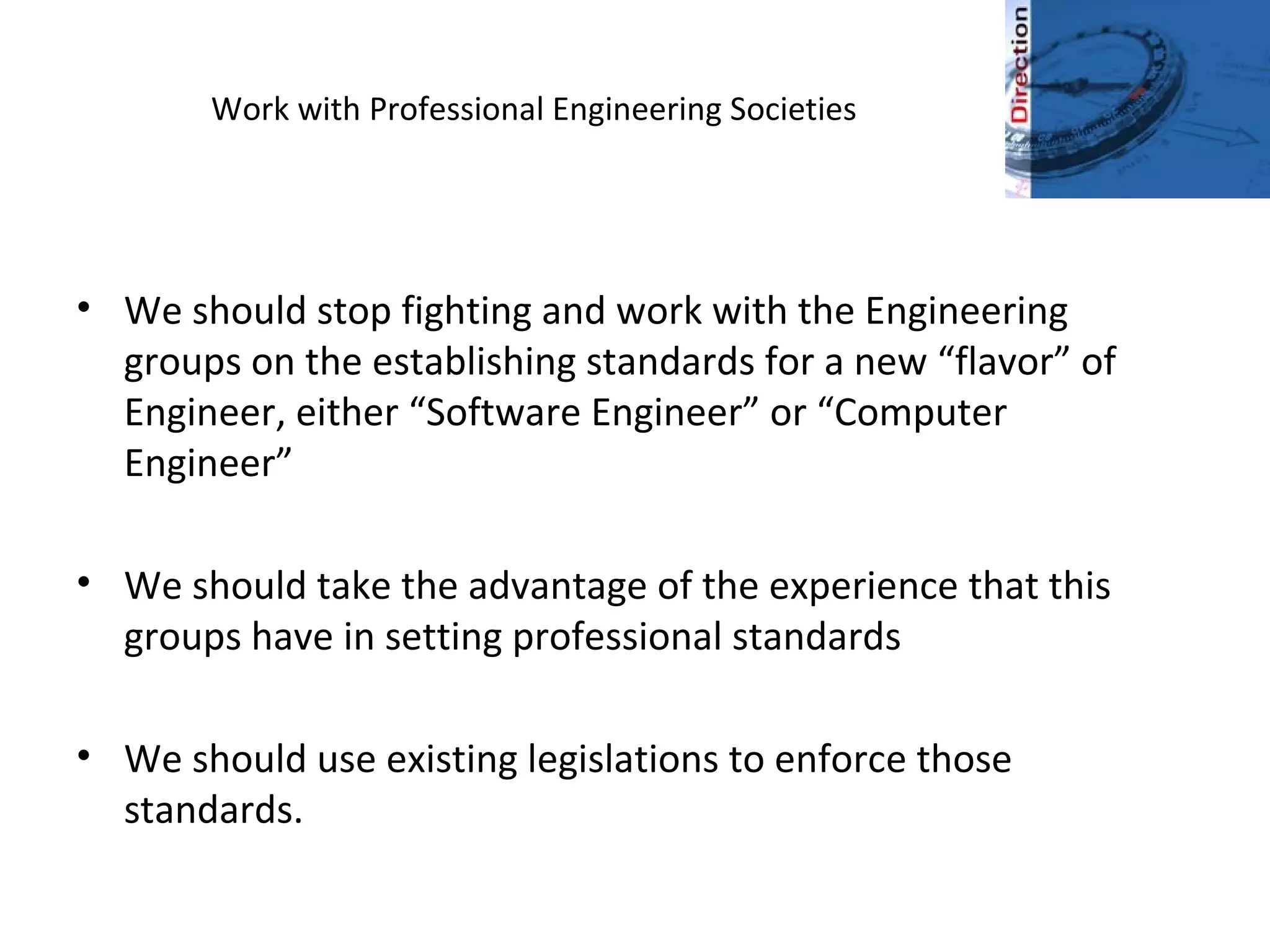
![Develop Accreditation Procedures for Software Engineering Programs
It is time to develop standards for the educational programs
that will be uniquely designed and target needs of Software
Engineering as a discipline not as a subprogram of Electrical
Engineering or Computer Science.
The aim [of education] must be the training of independently
acting and thinking individuals who, however, see in the
service to the community their highest life achievement.
– Albert Einstein](https://image.slidesharecdn.com/professionalresponsibilitiesofsoftwareengineering-180911040509/75/Professional-responsibilities-of-software-engineering-29-2048.jpg)



